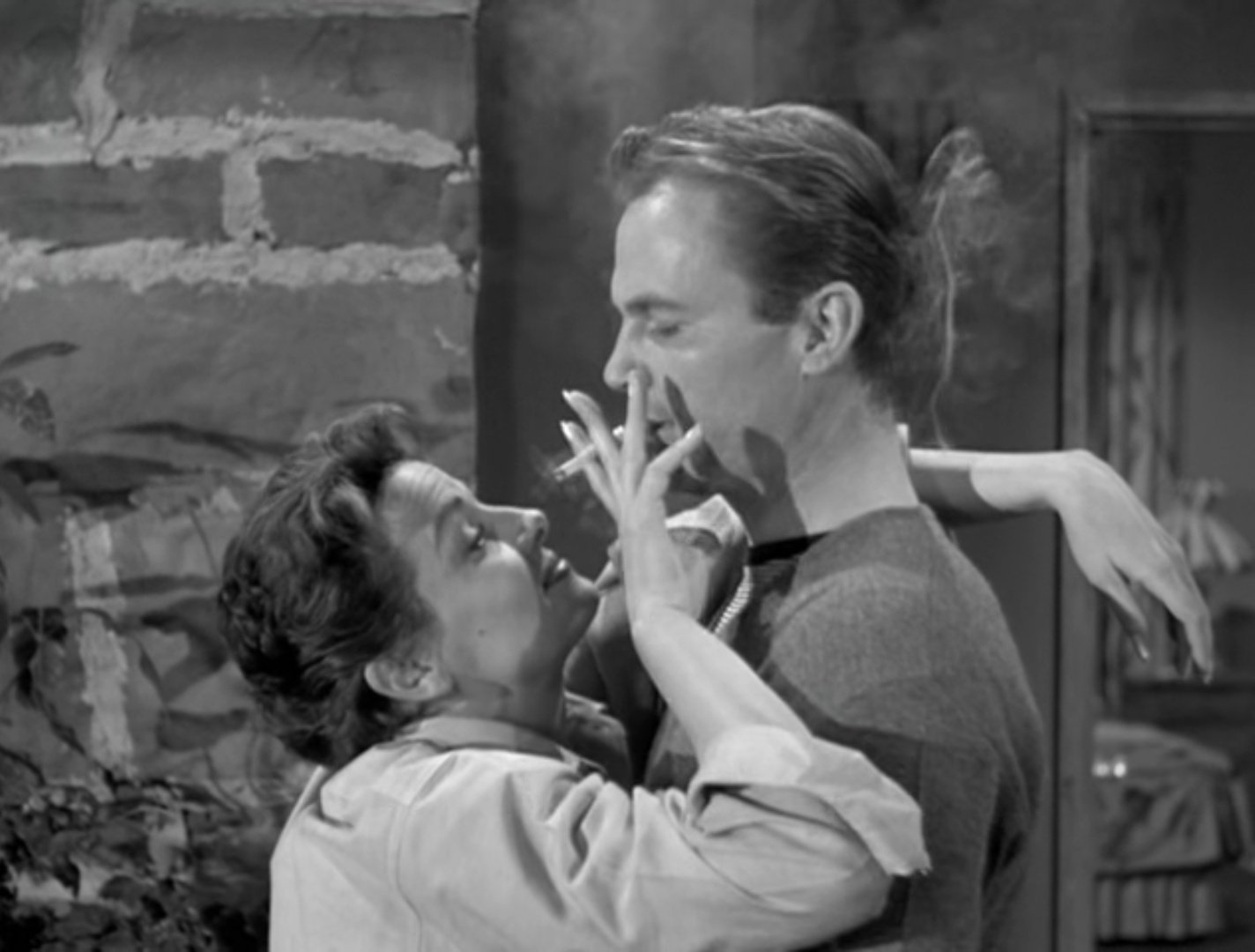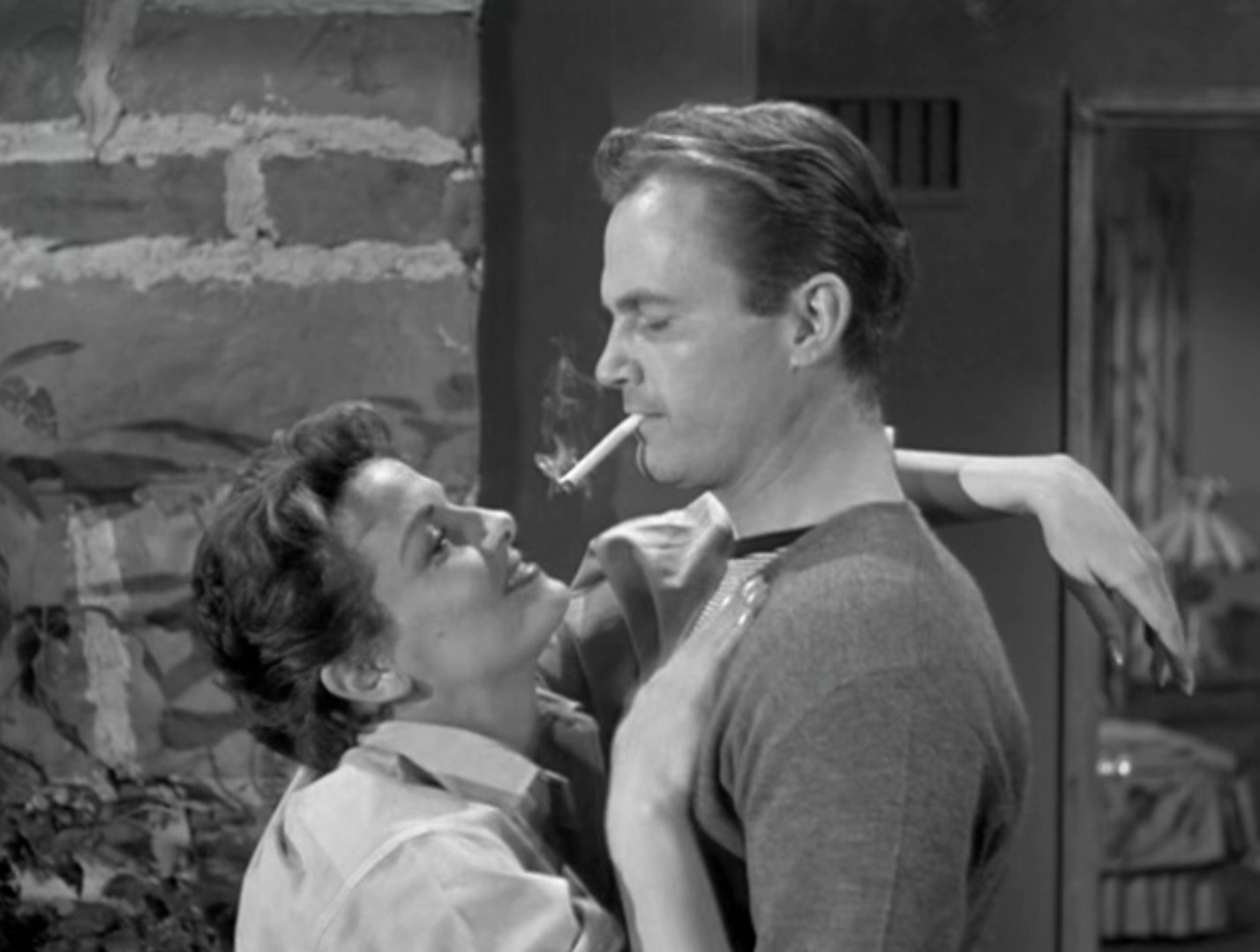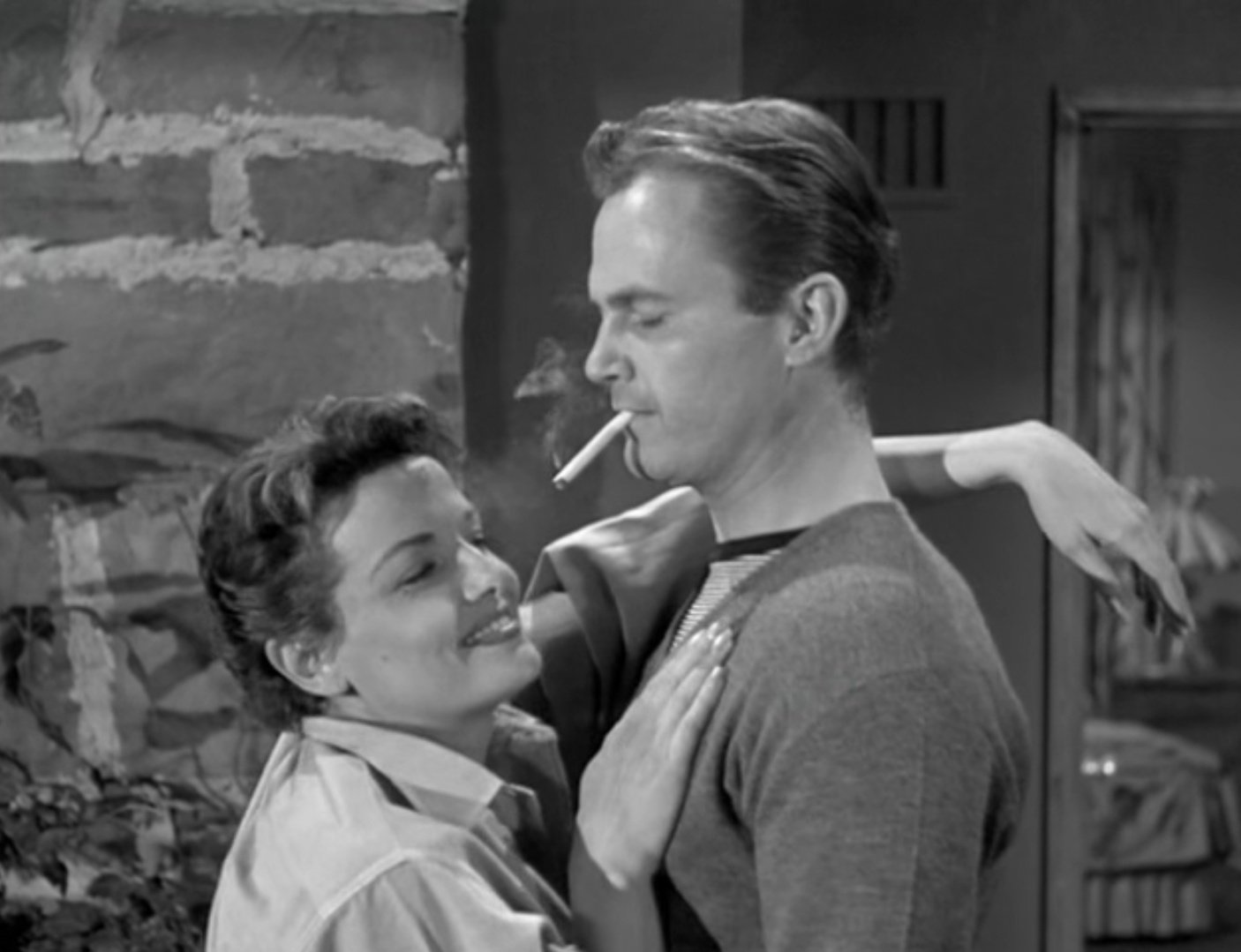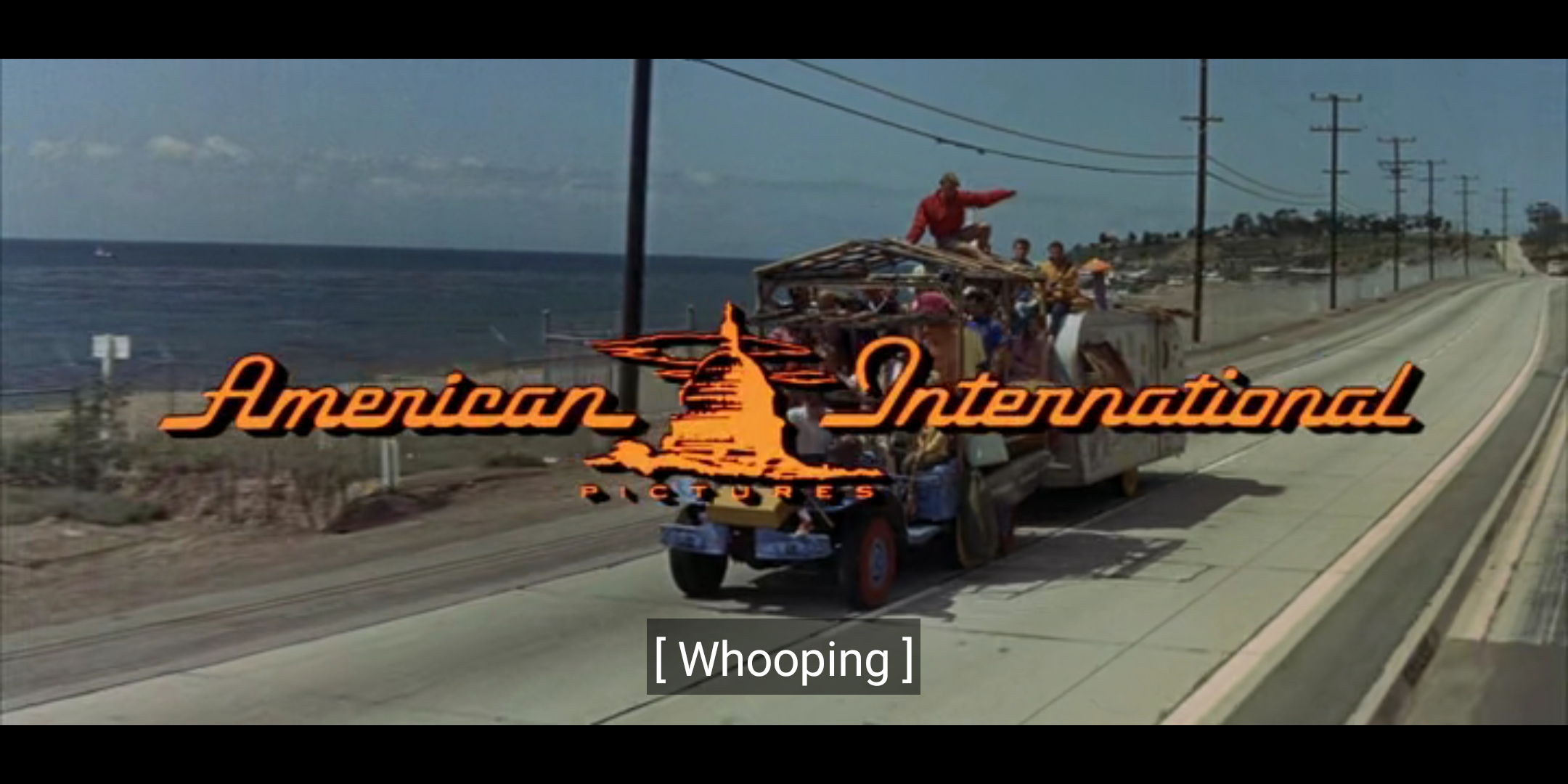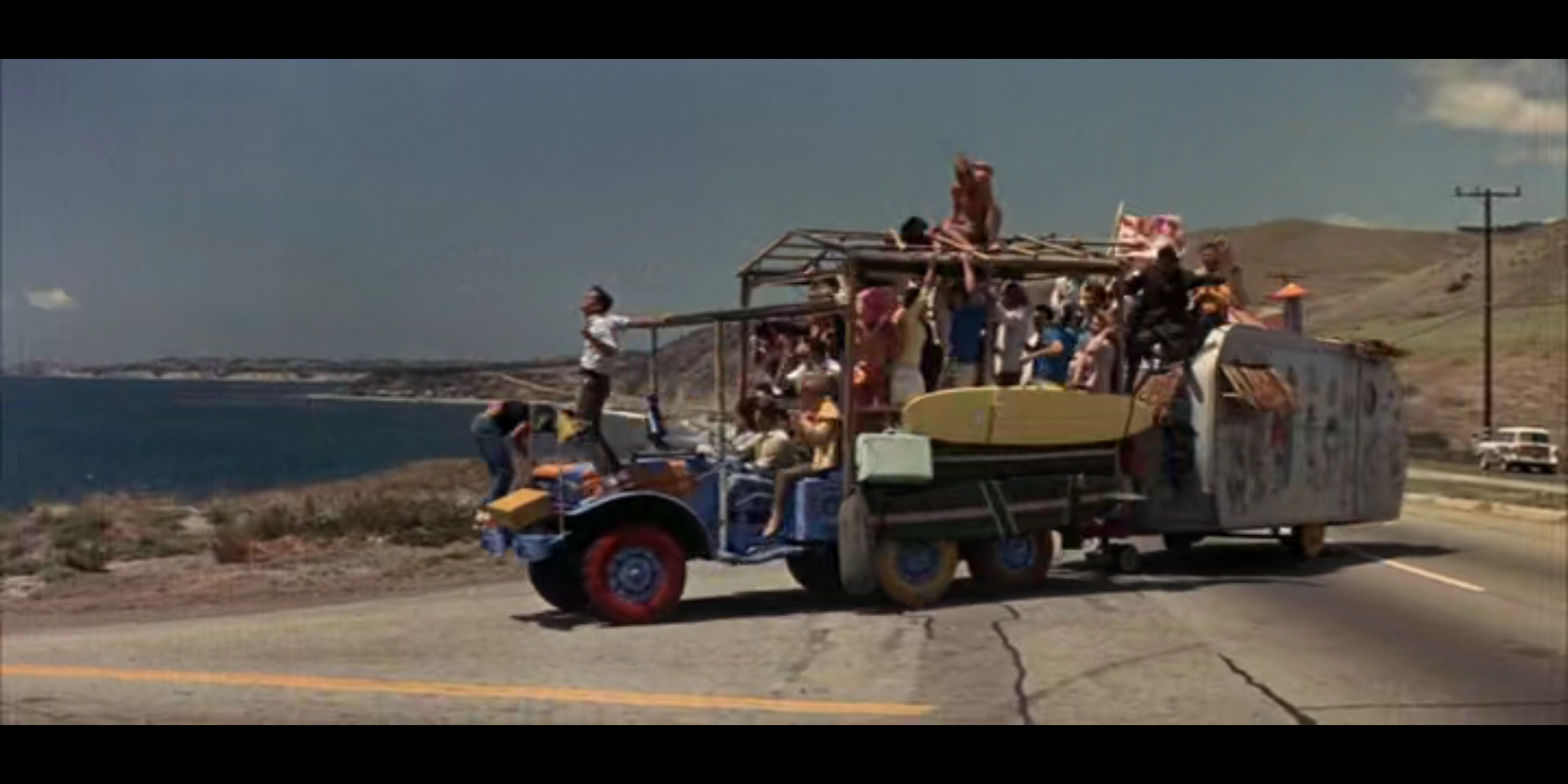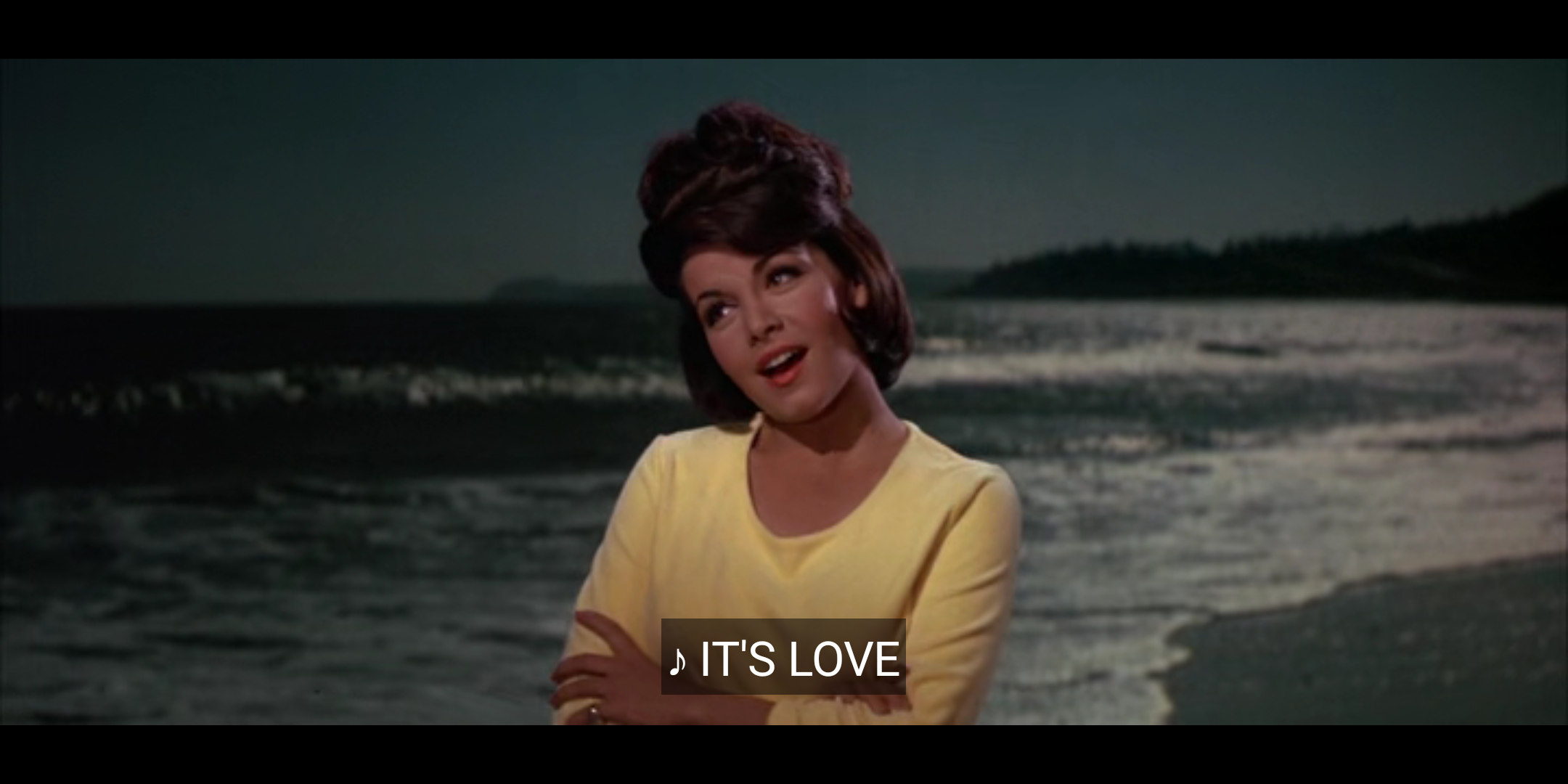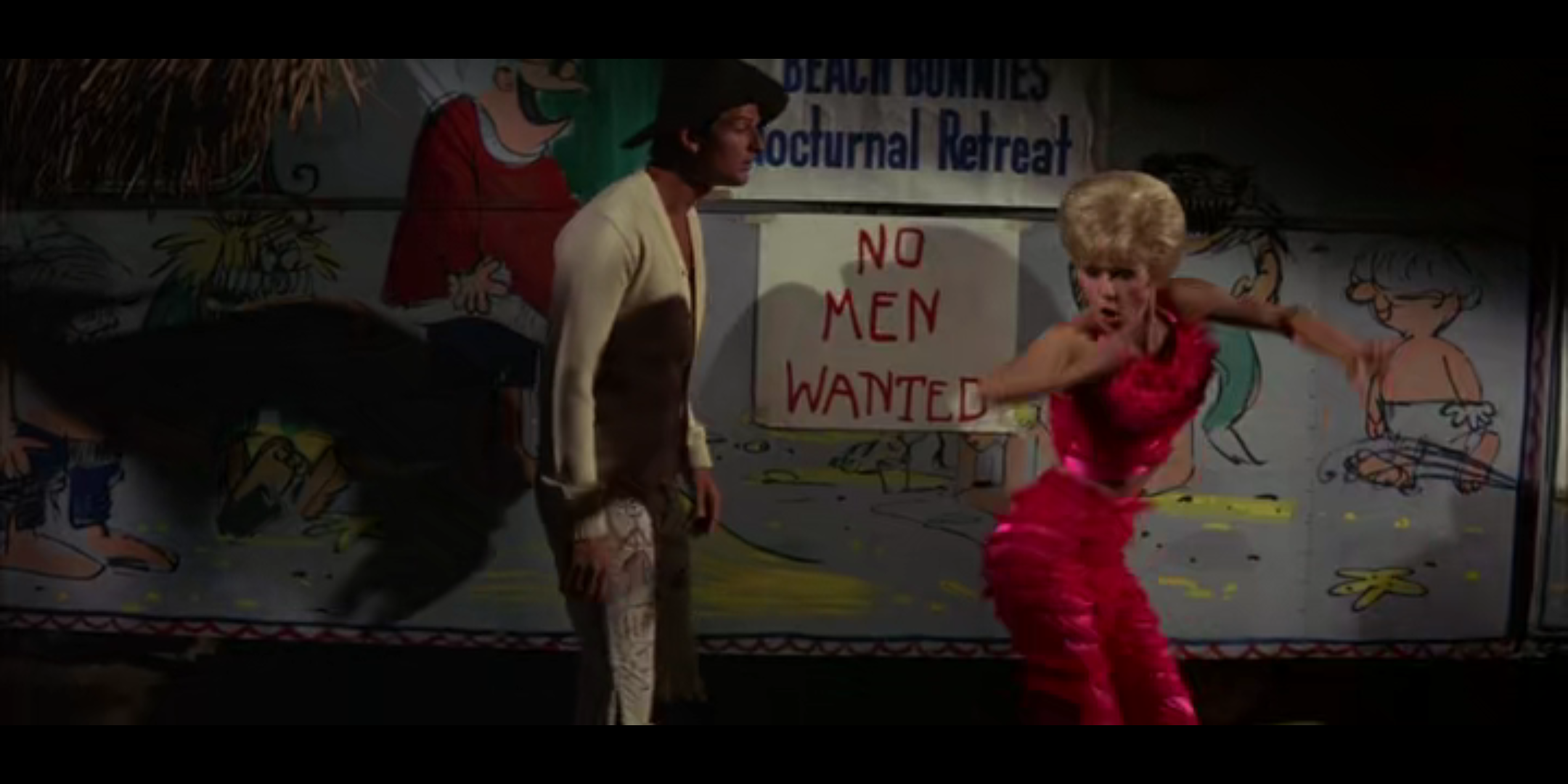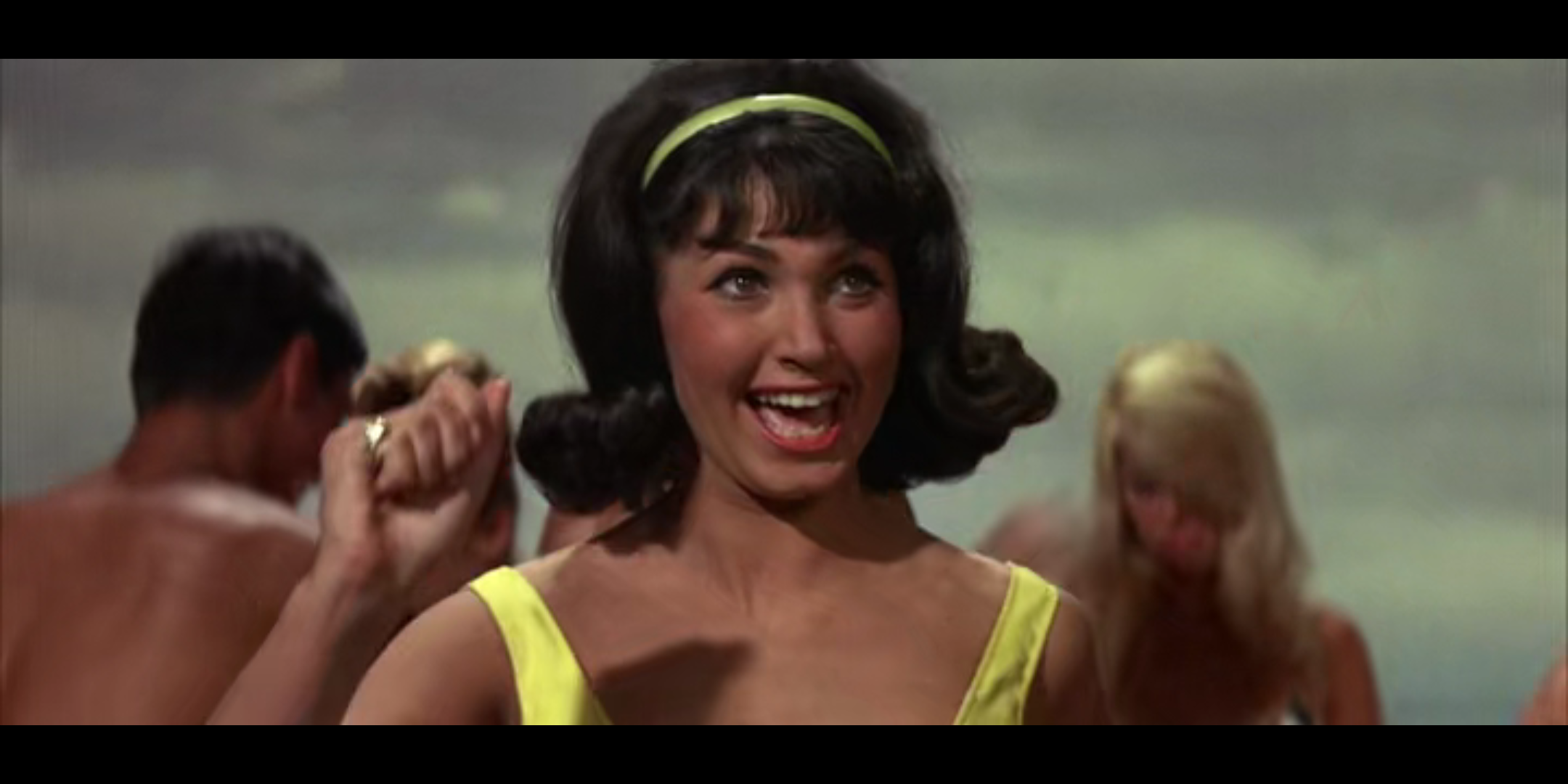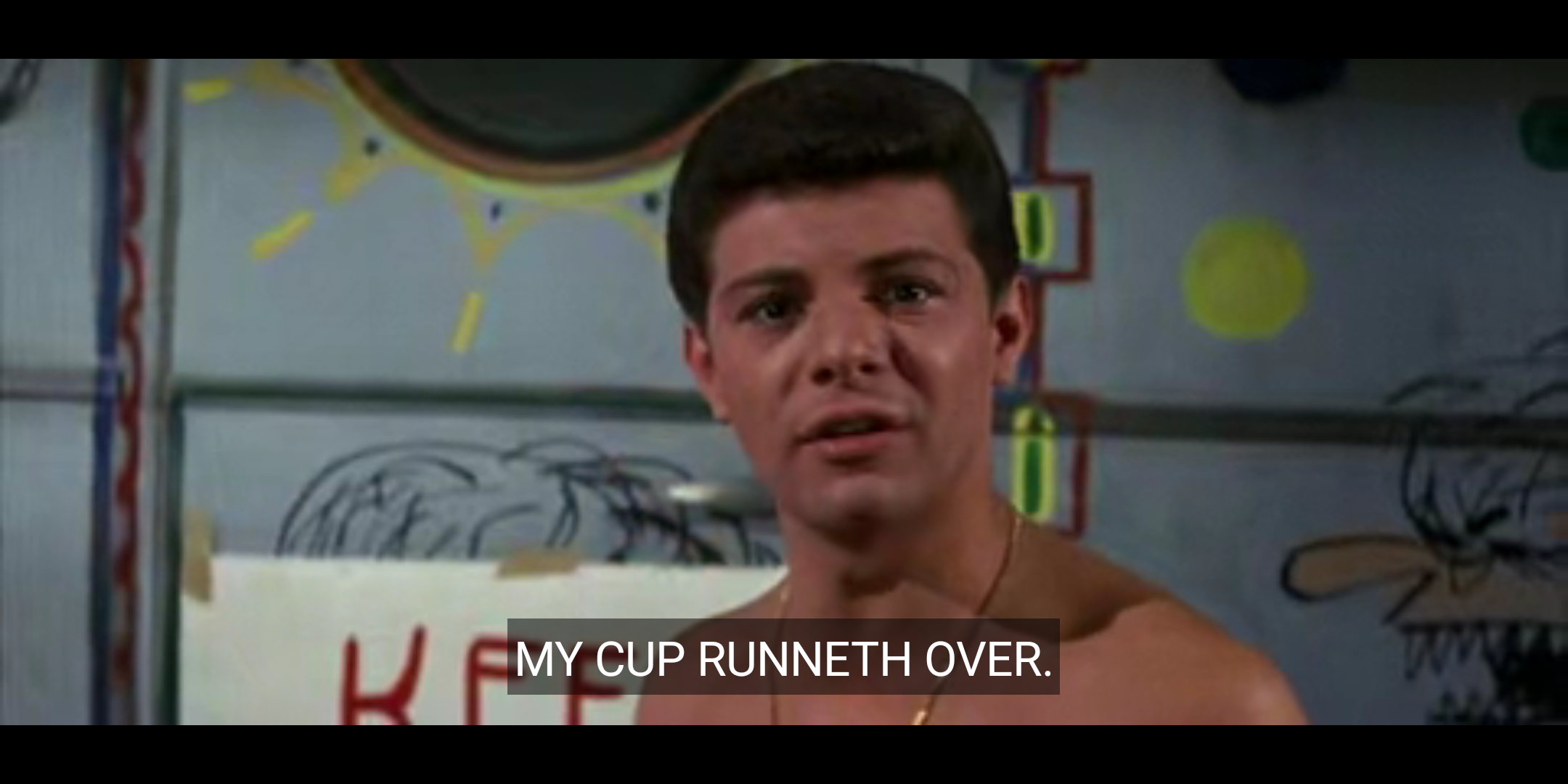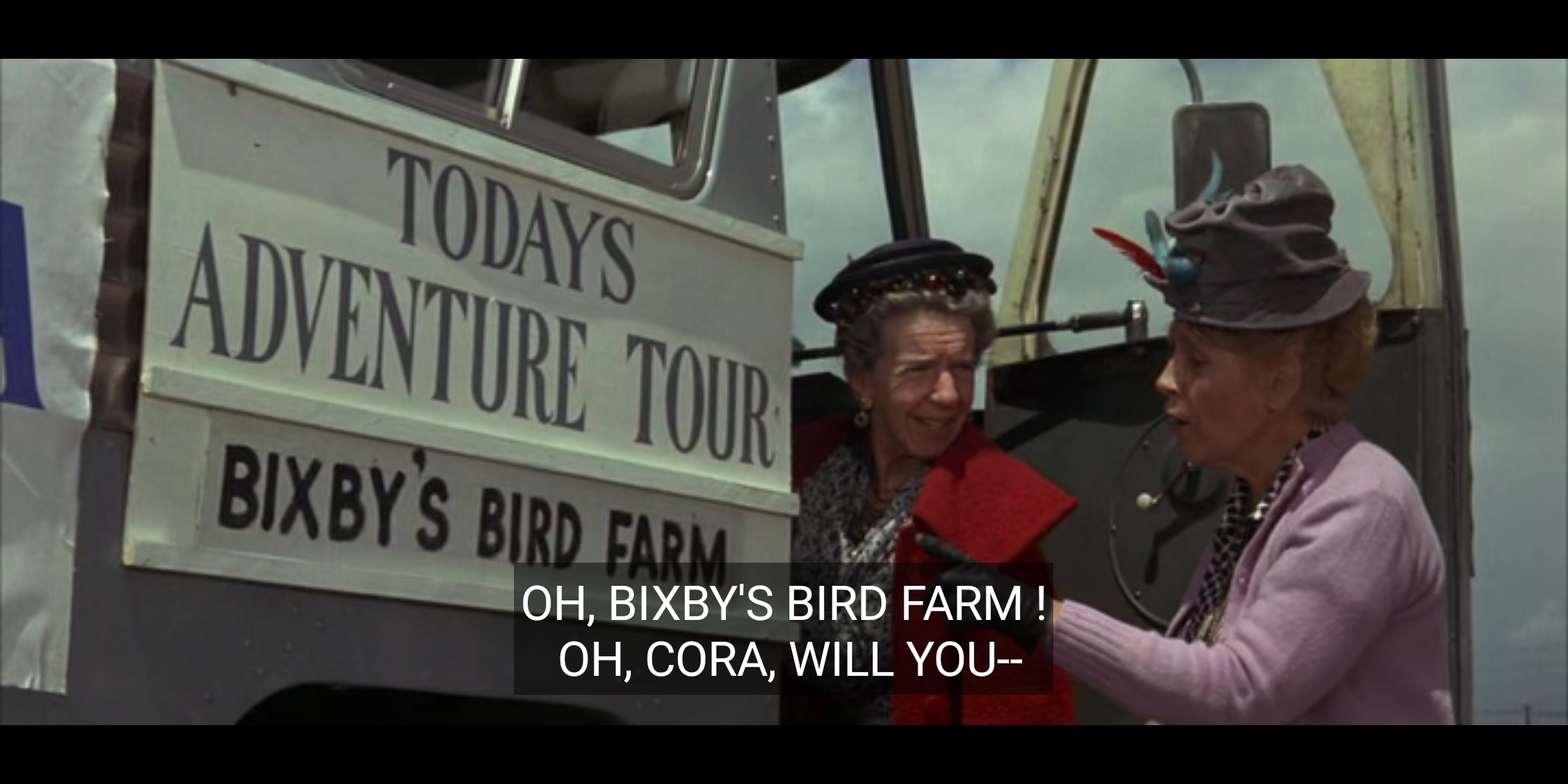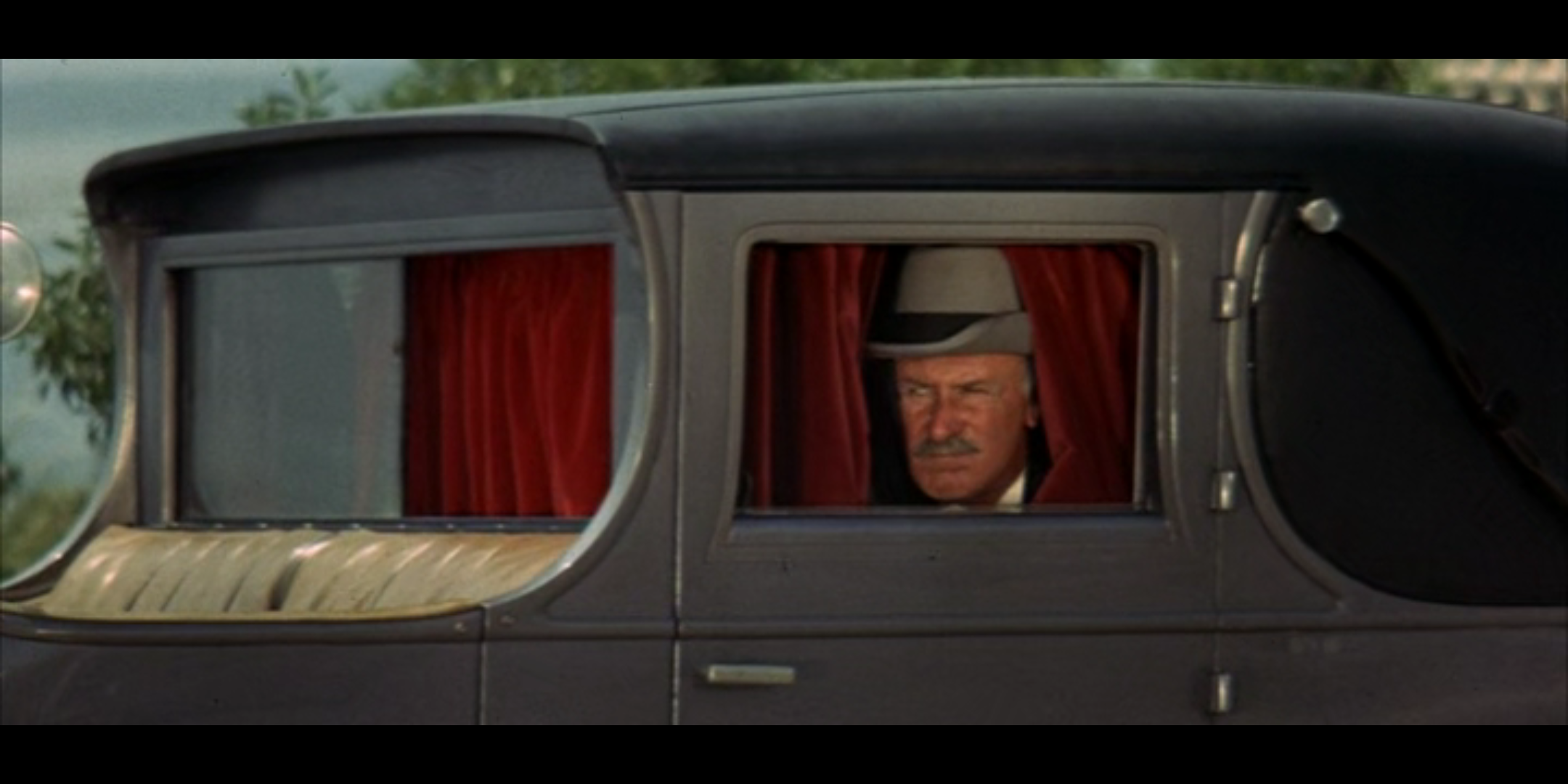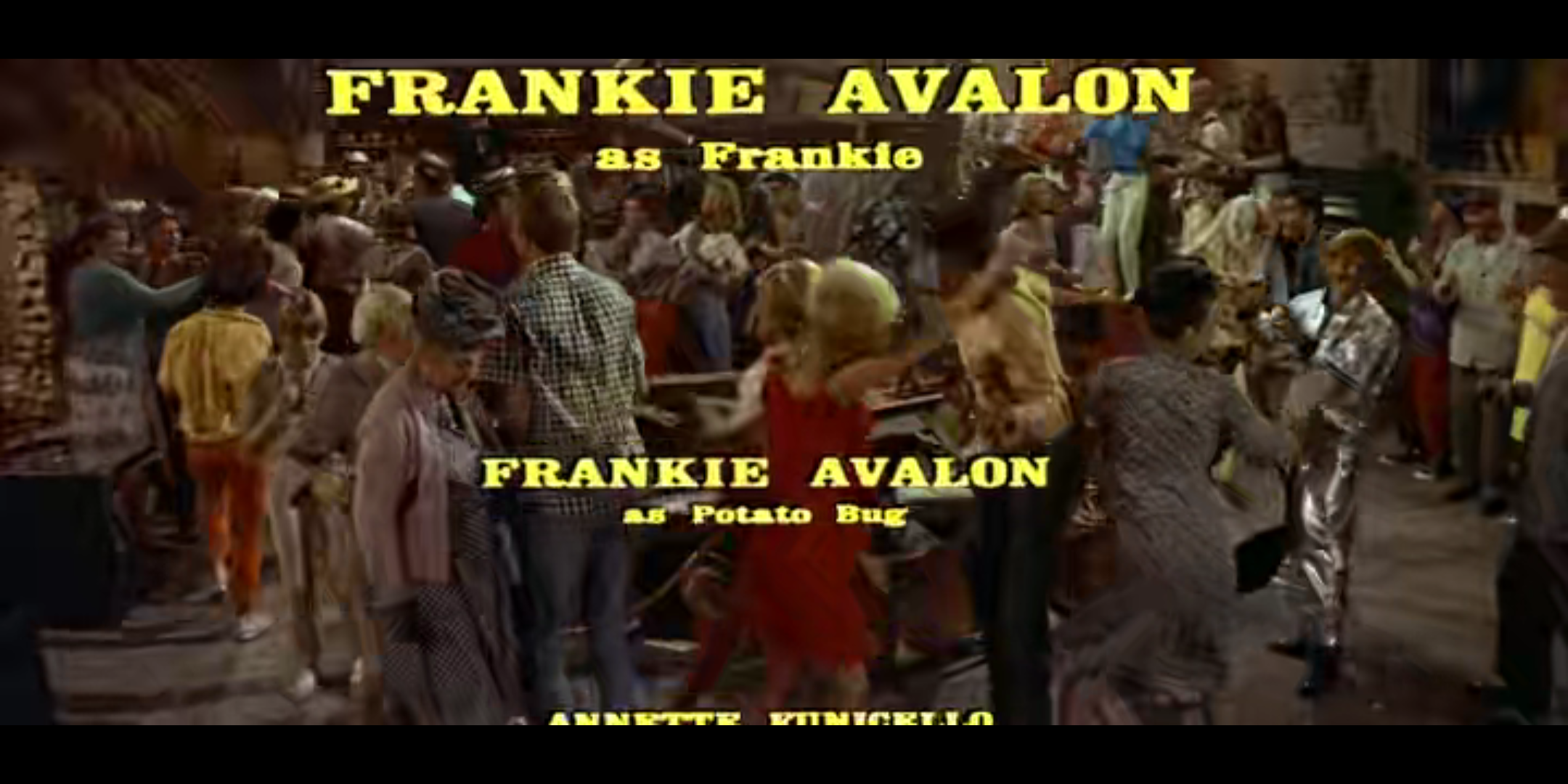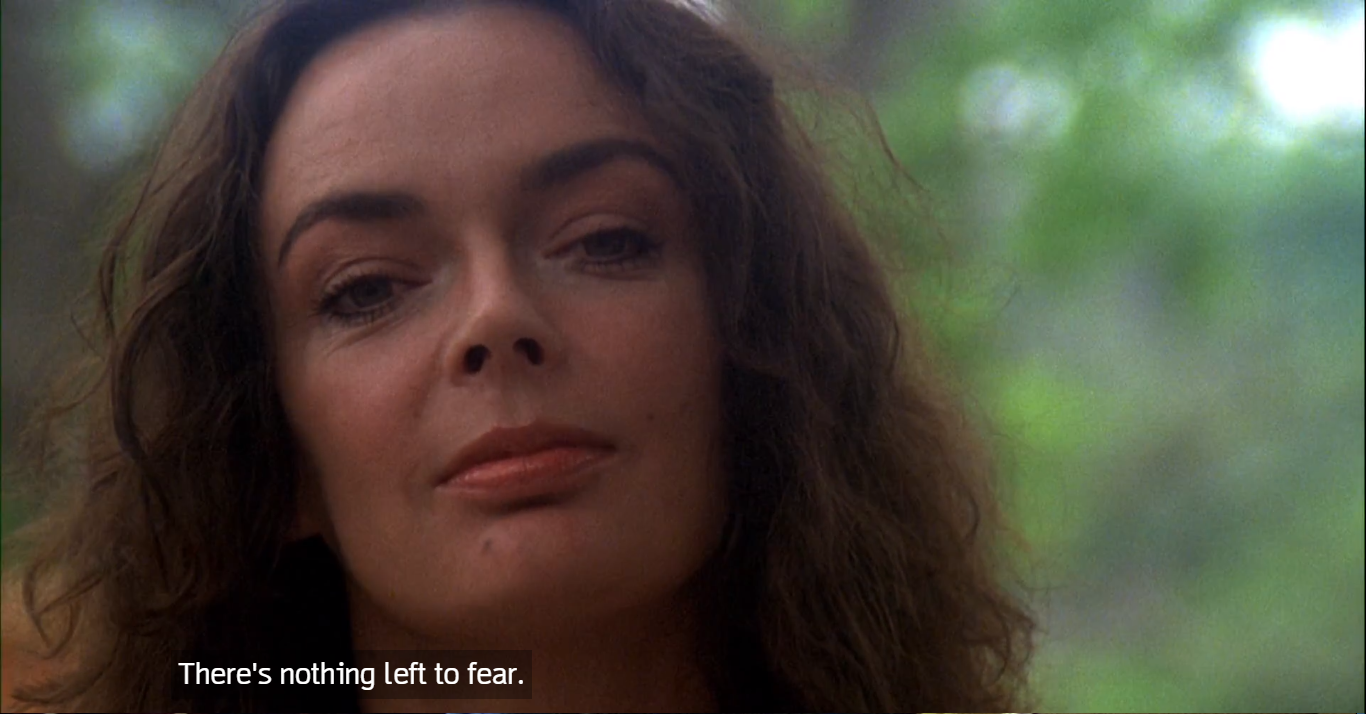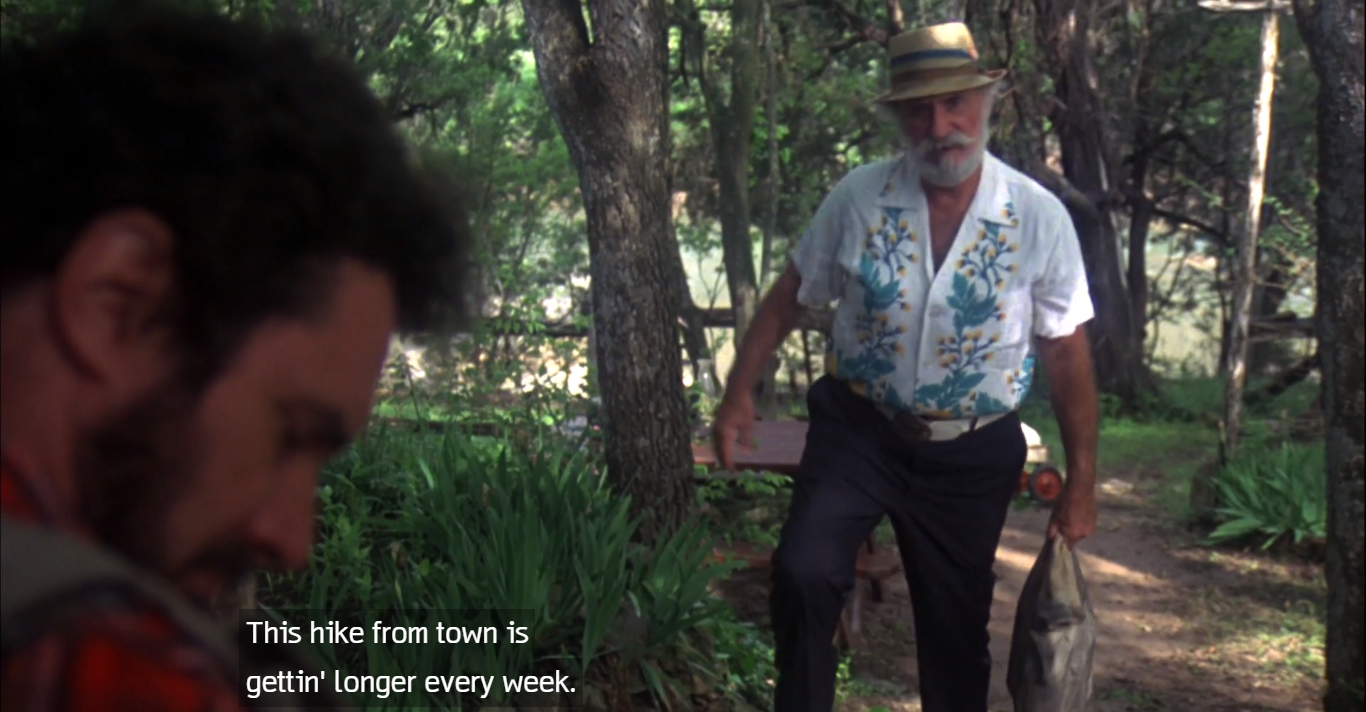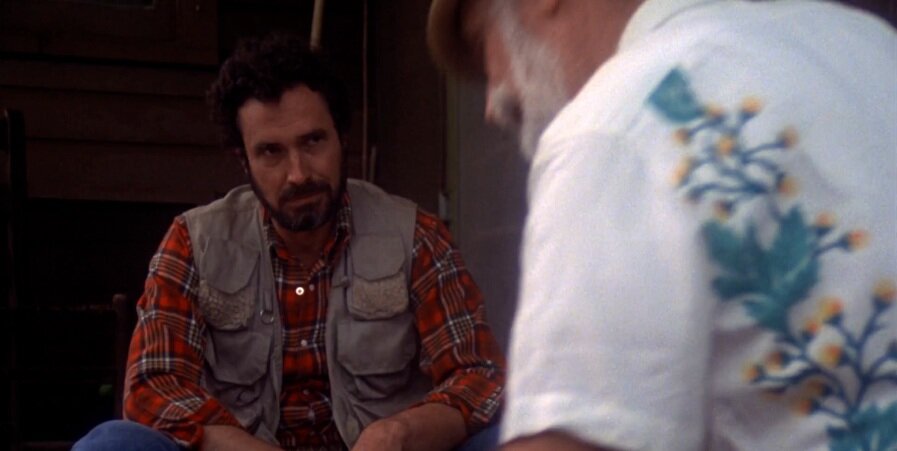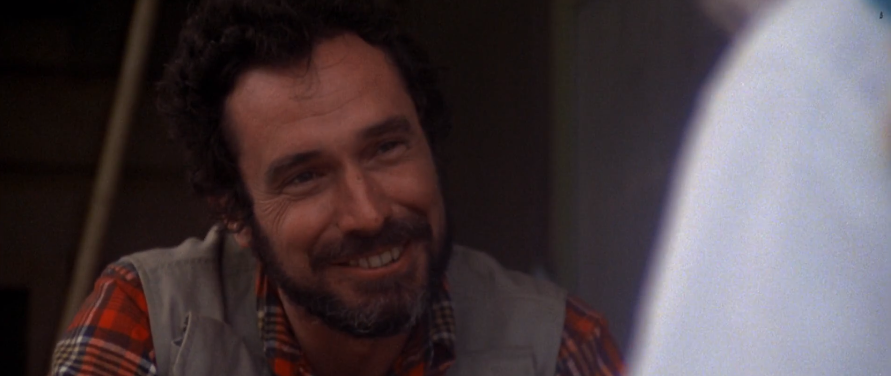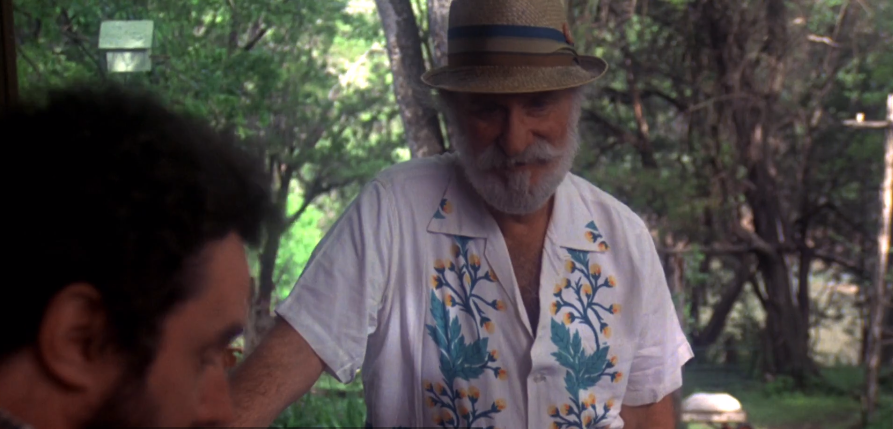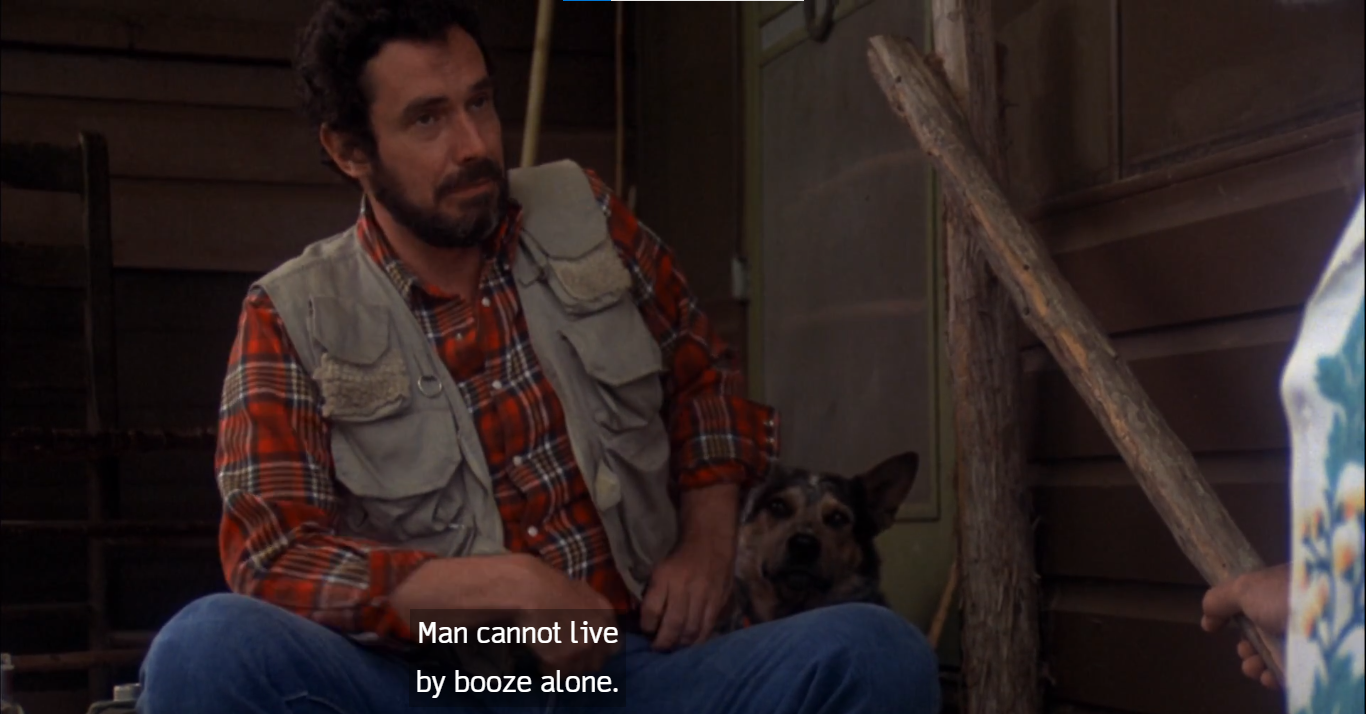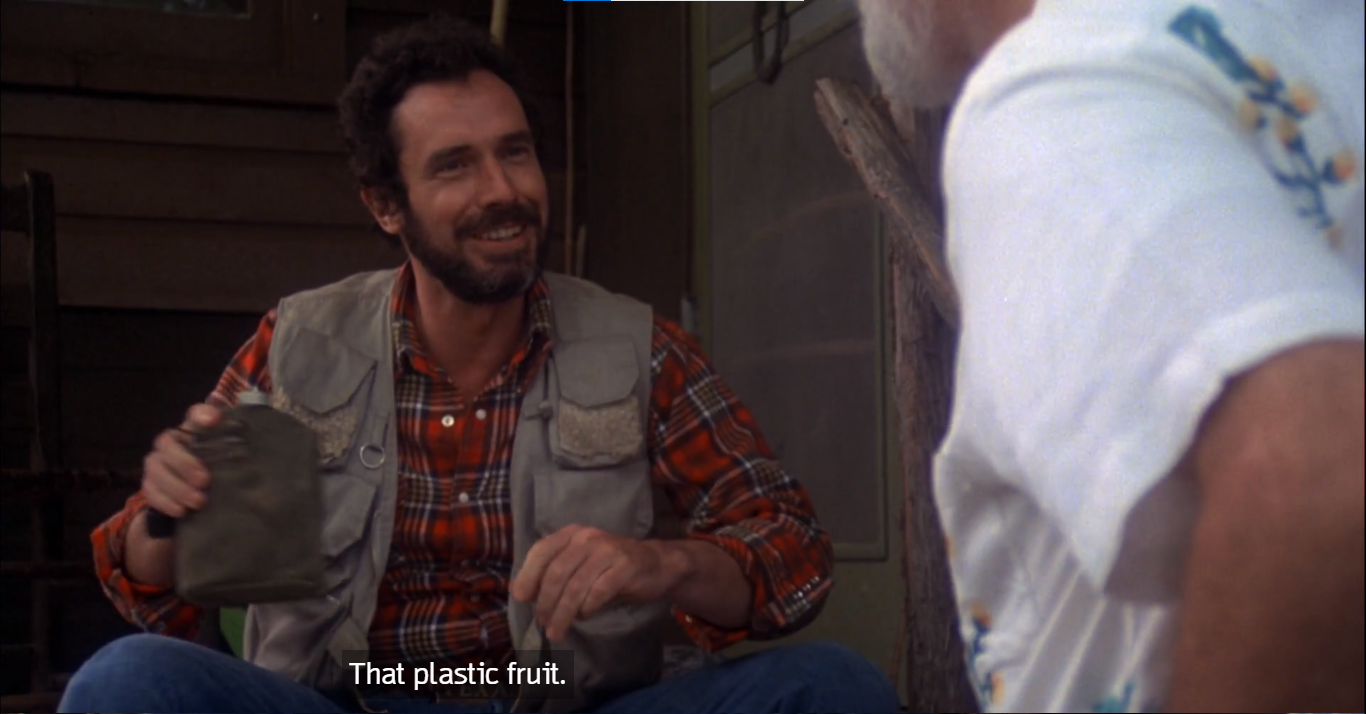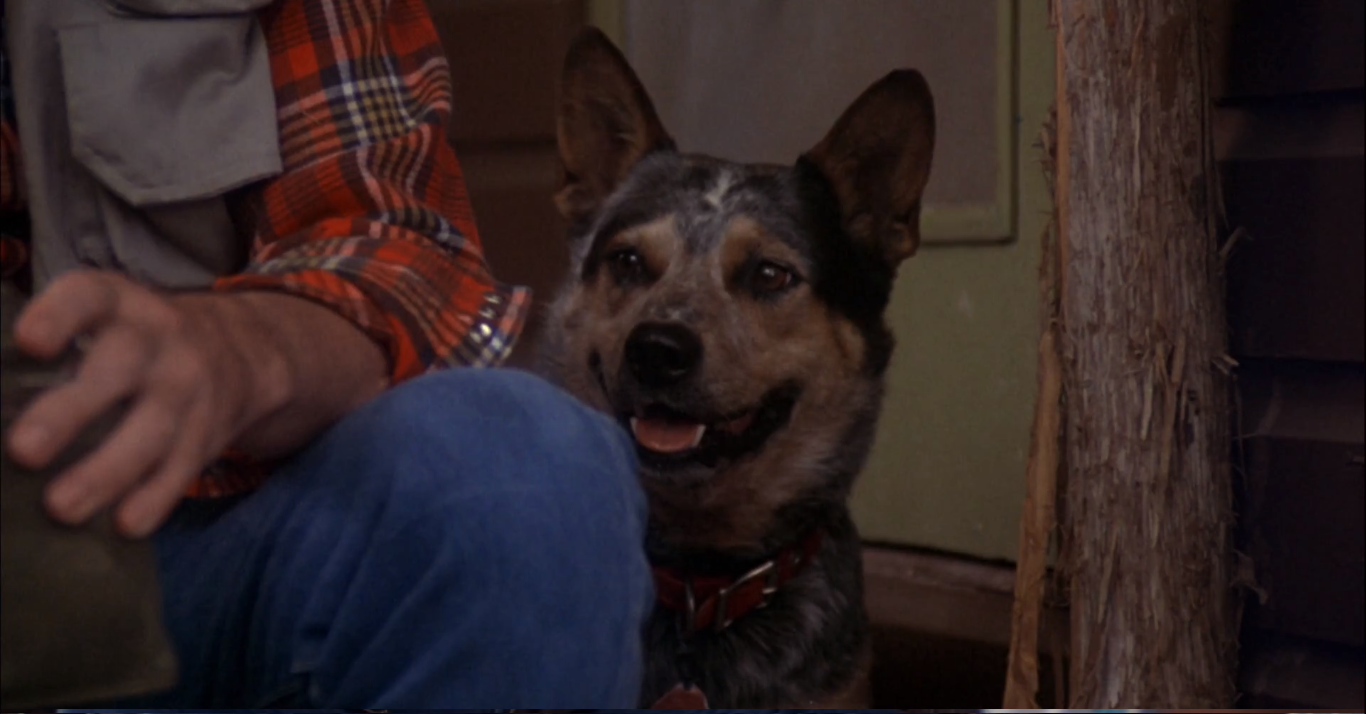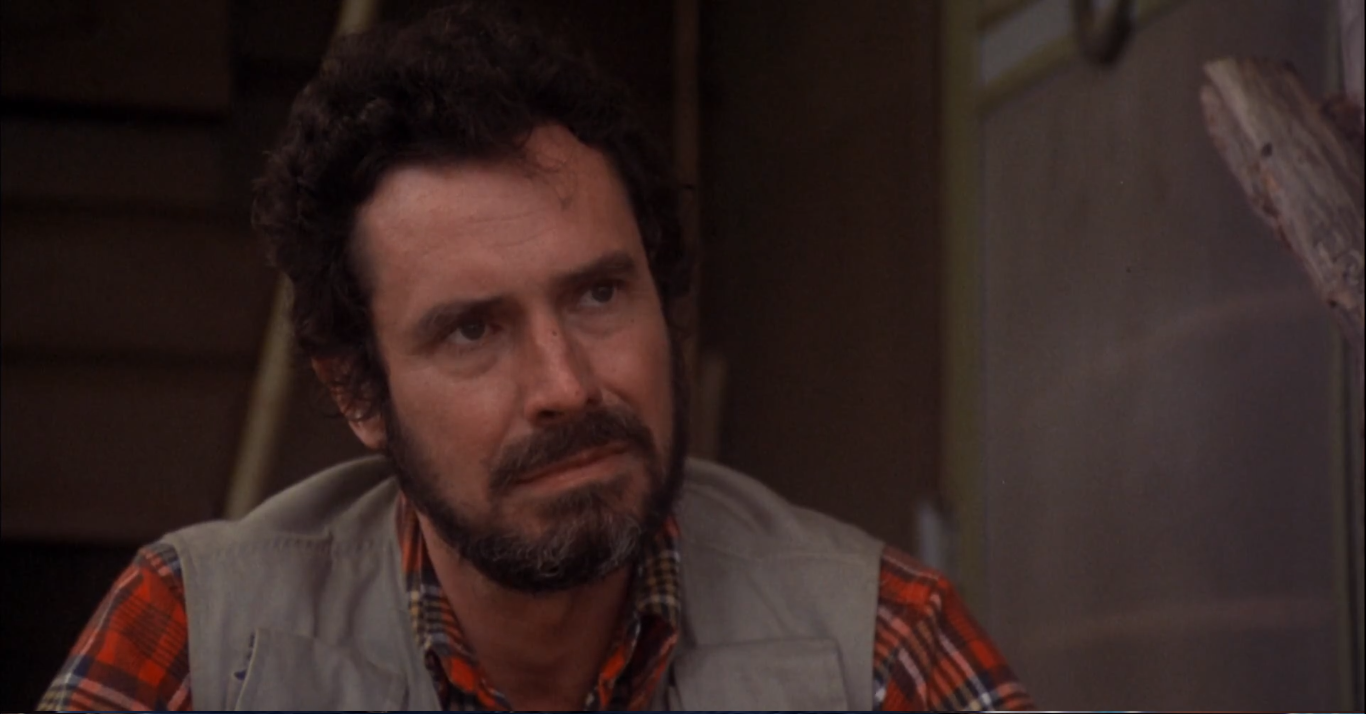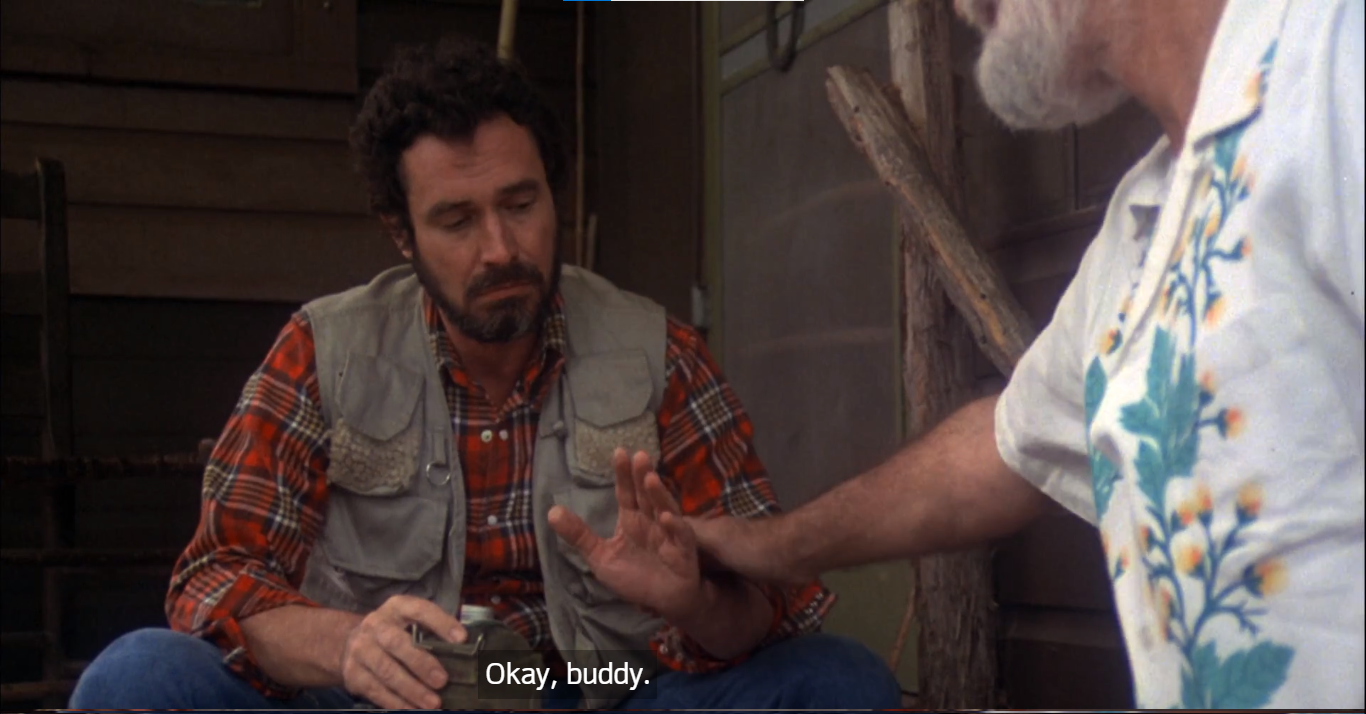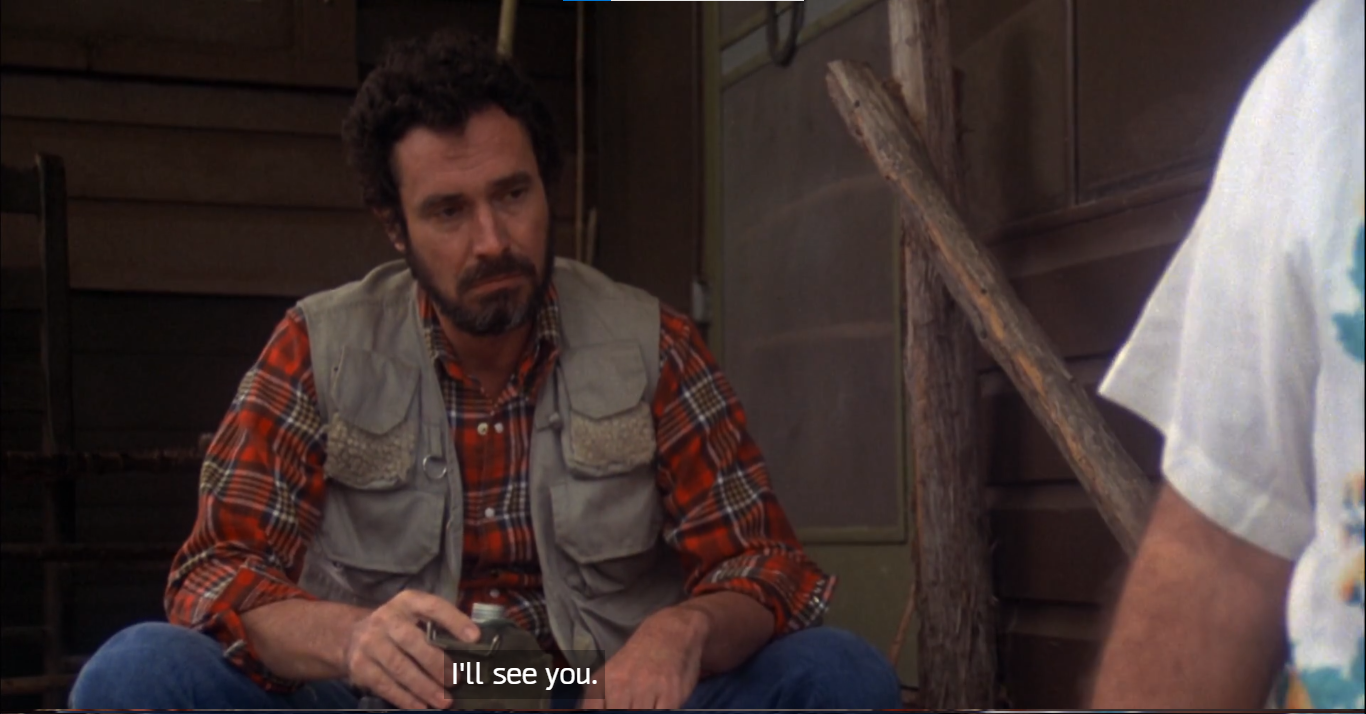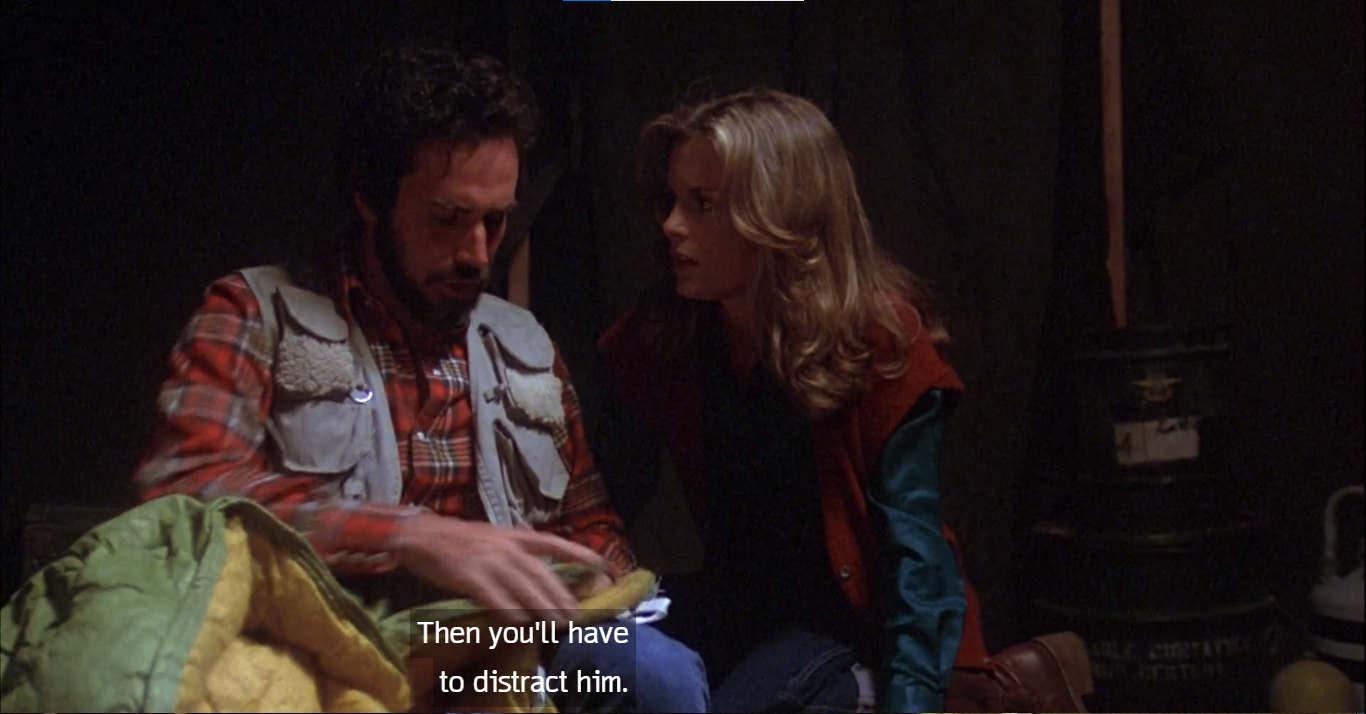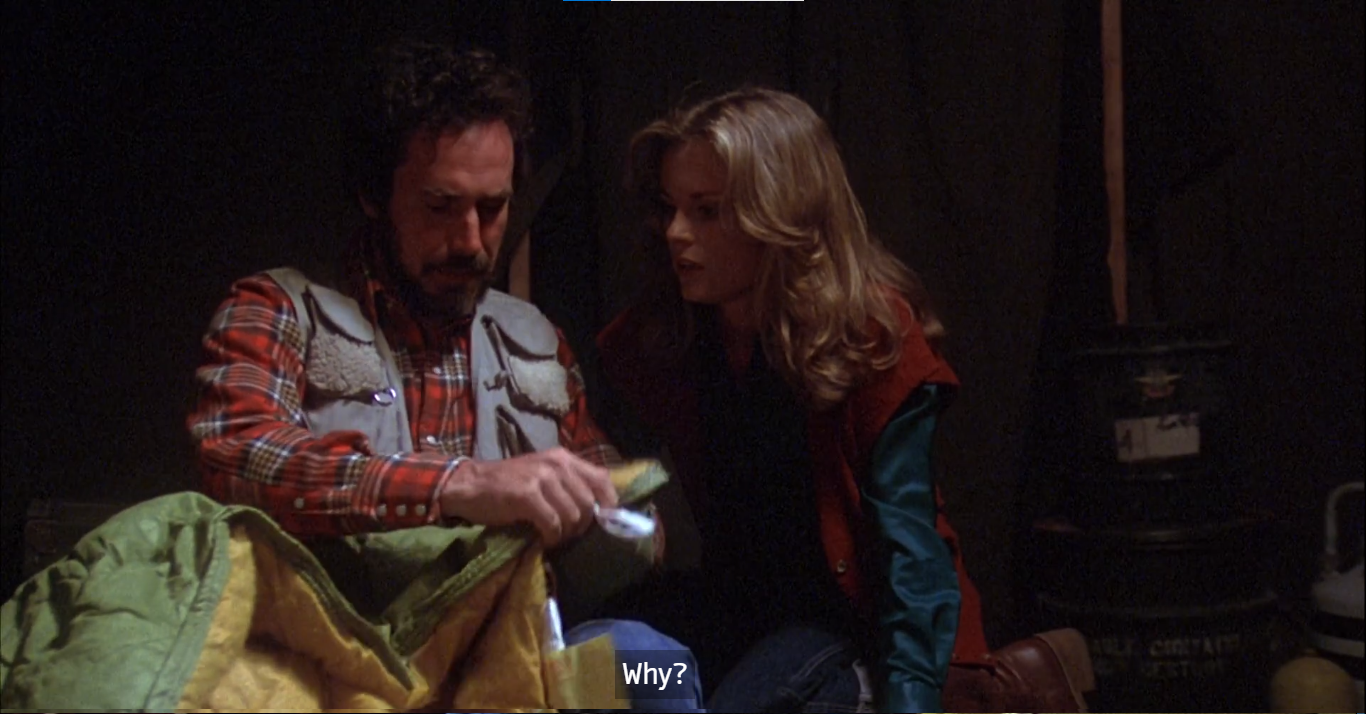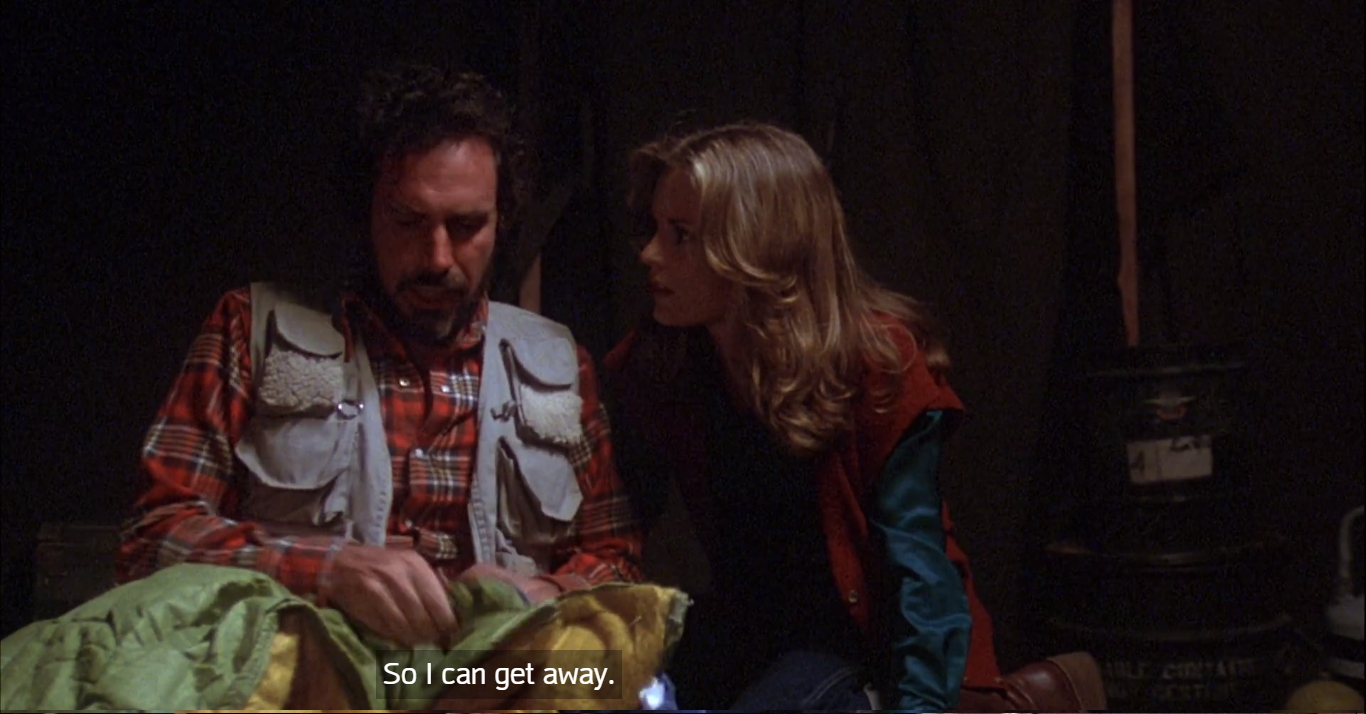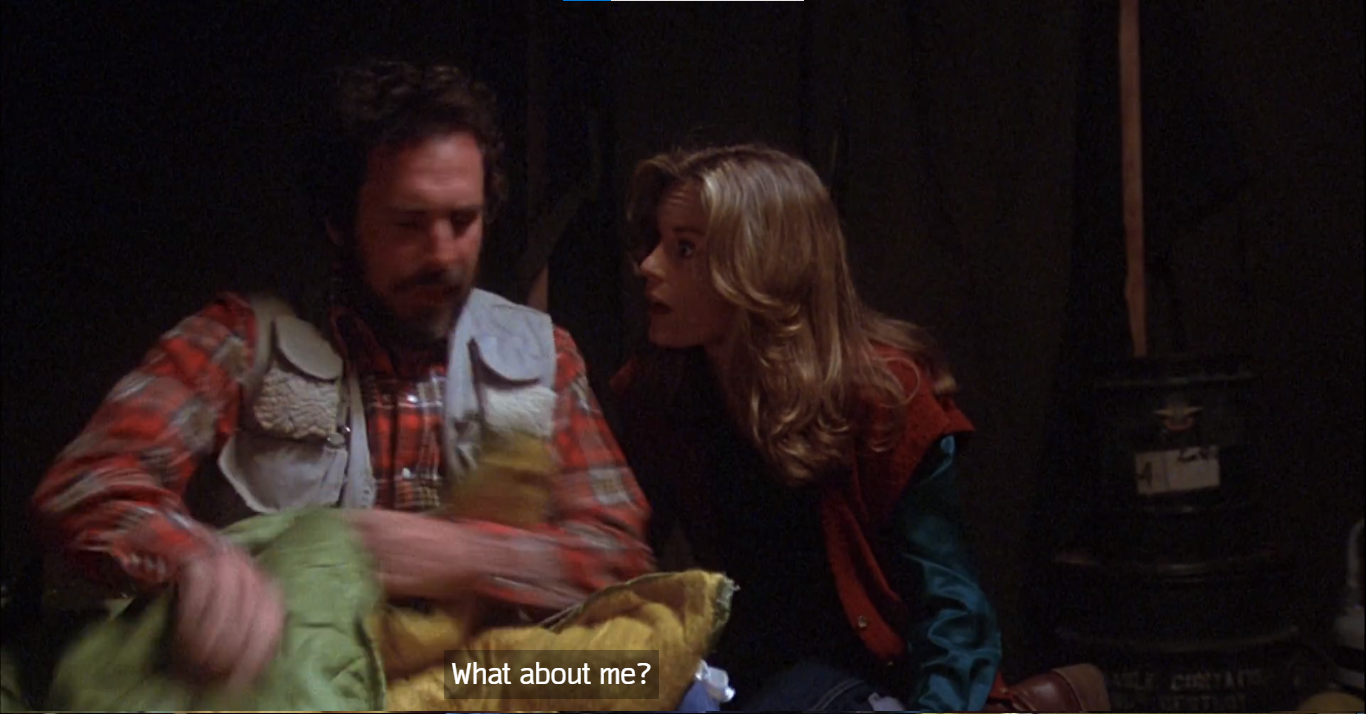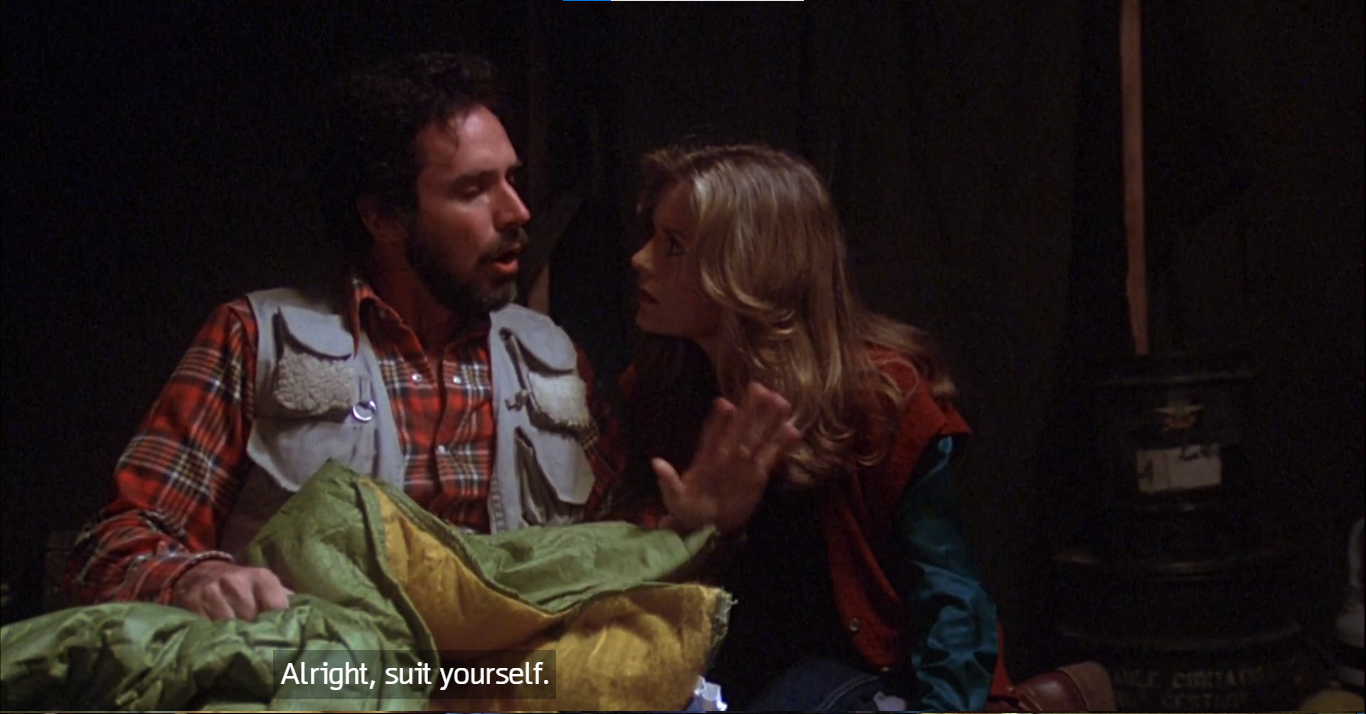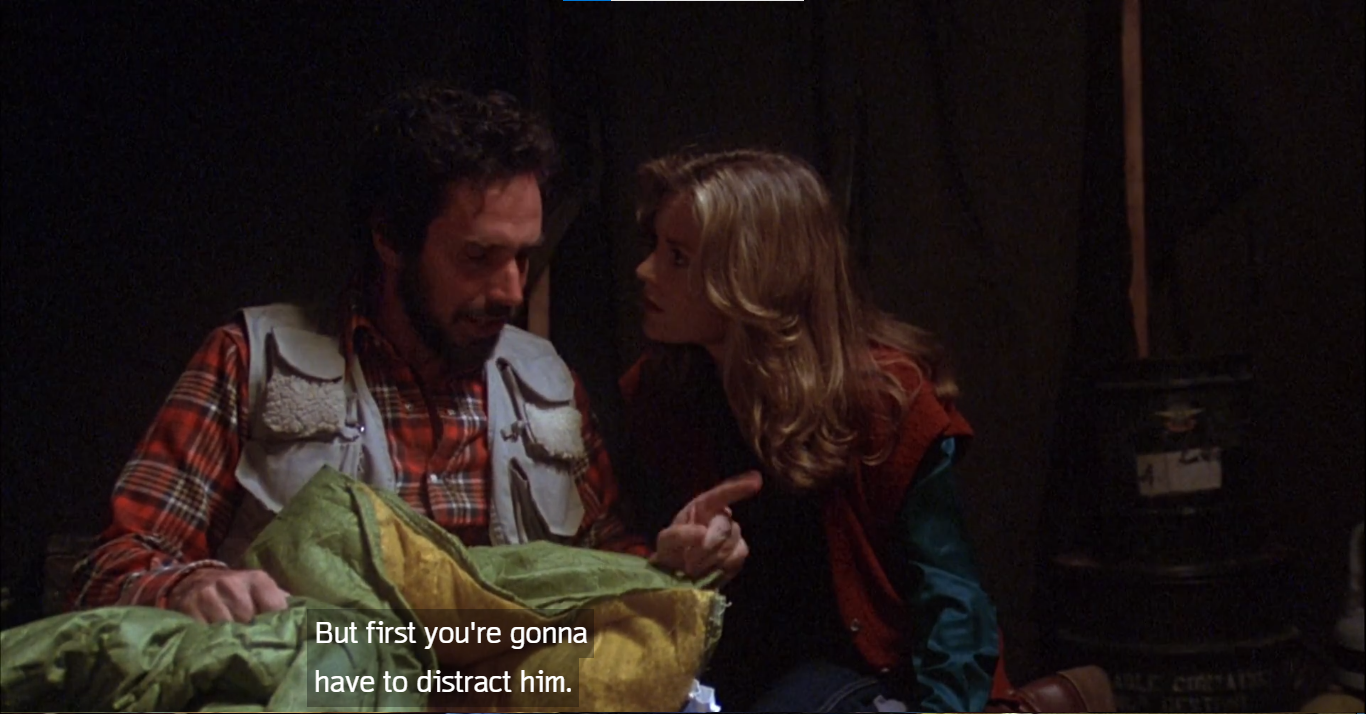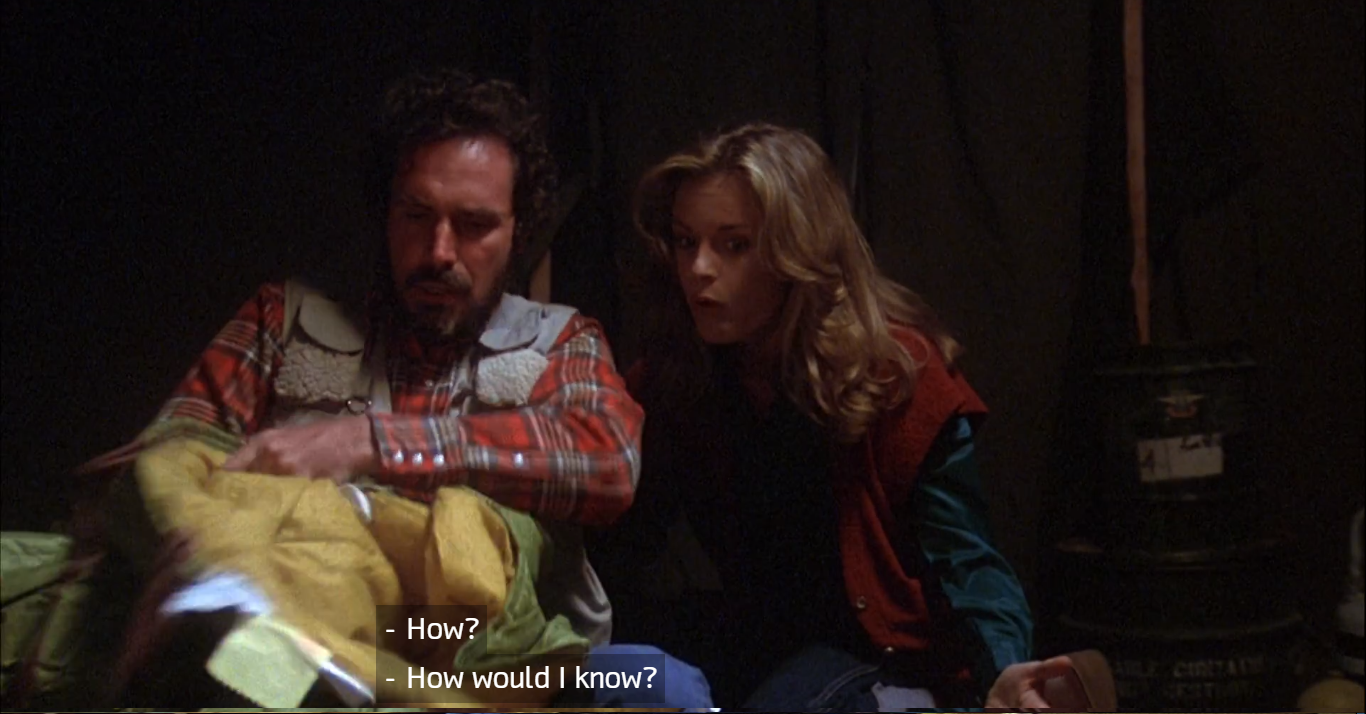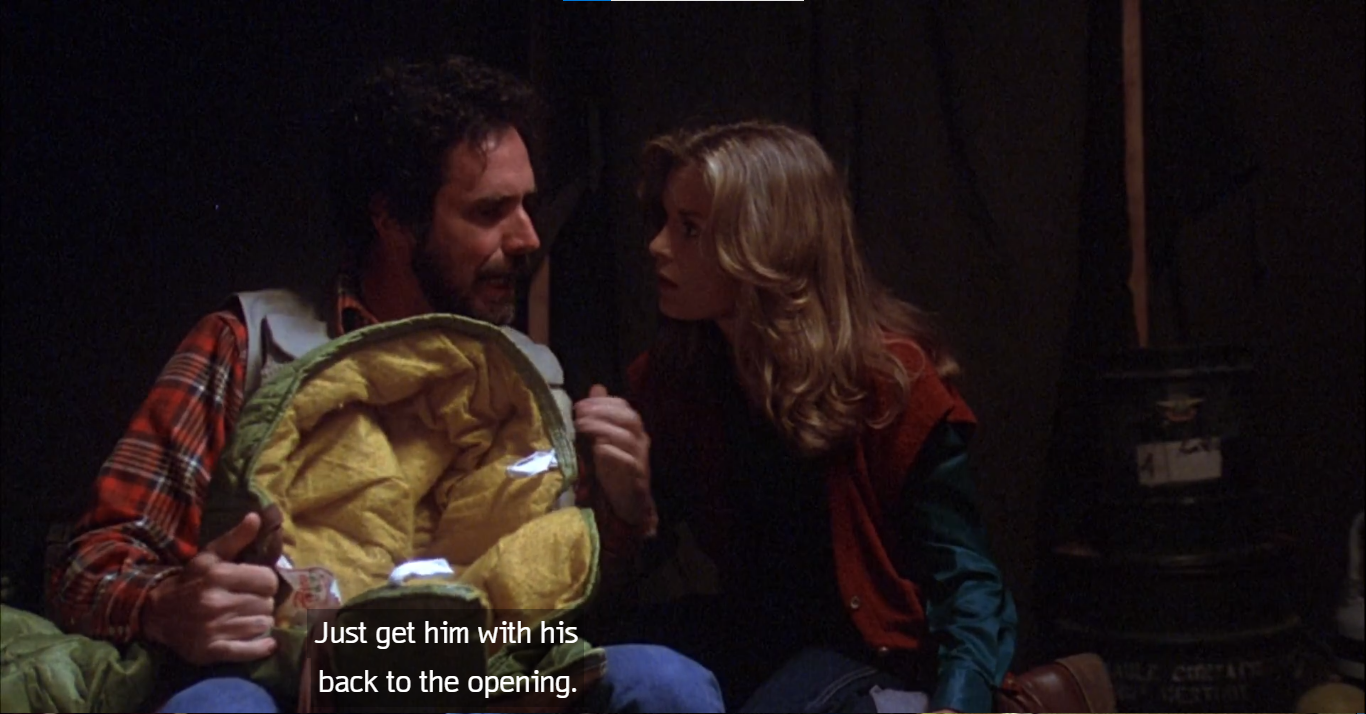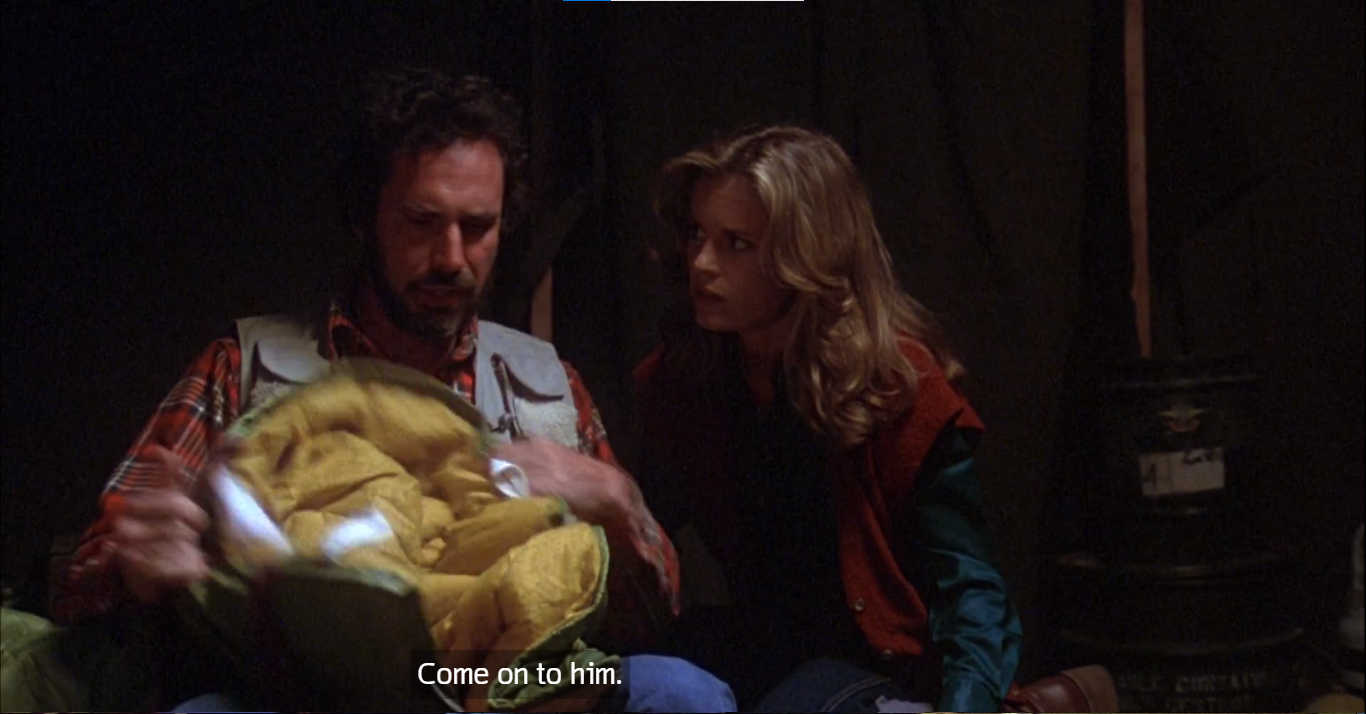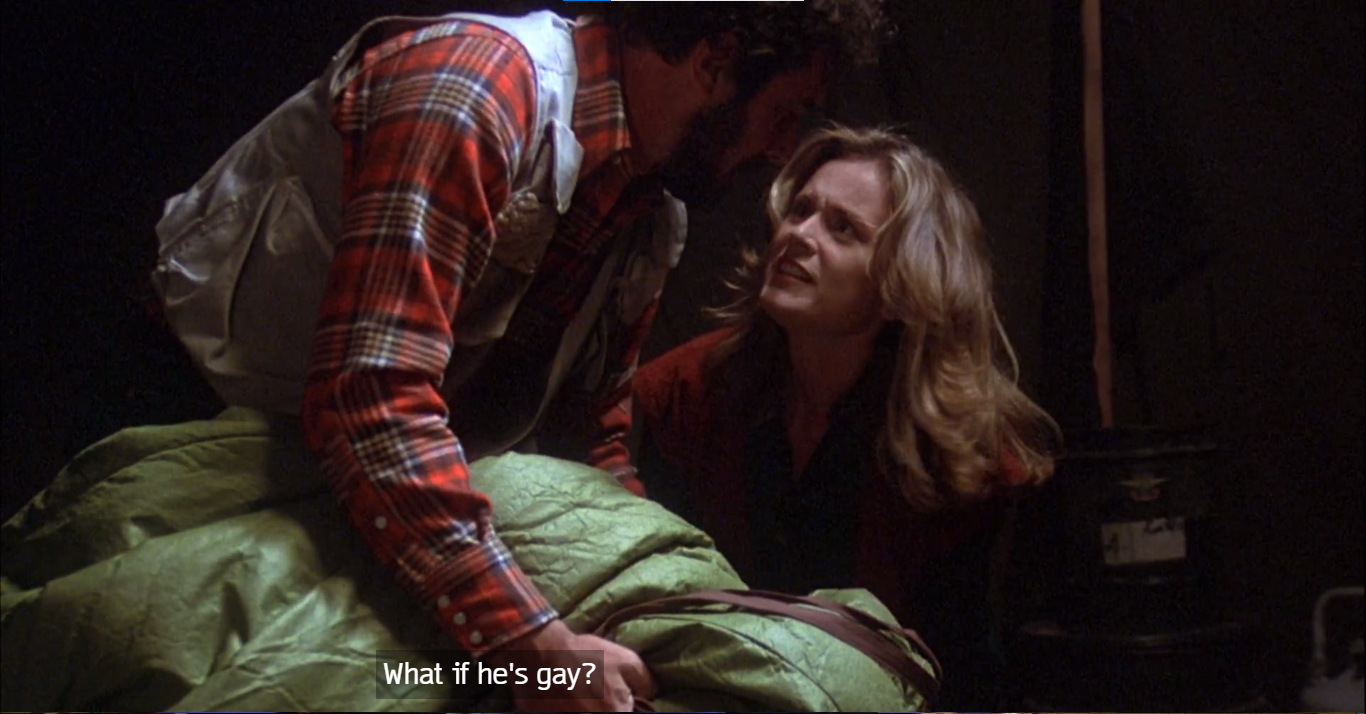The Fuzzy Pink Nightgown (1957): we need to talk about Jane Russell in menswear
The Fuzzy Pink Nightgown has everything…
The Fuzzy Pink Nightgown // dir. Norman Taurog // United States
The Fuzzy Pink Nightgown has everything: Jane Russell in a cheap blonde wig, Ralph Meeker kidnapping someone, Keenan Wynn third-wheeling, Hollywood insider shenanigans, action intrigue, cops getting knocked out with ash trays, Una Merkel wise-cracking, eggnog-induced drunken antics, Adolphe Menjou gliding around like it’s 1937, and of course, confusing and troubling moral ethics baked right into the script!
Yes, this film is about a movie star falling in love with her violent and frightening kidnapper. And, also yes, Jane Russell is a pure powerhouse of charisma and Ralph Meeker is a rare and perfect male energy match for her.
Look, I love The Fuzzy Pink Nightgown. I need to enumerate every reason.
Let me give you the short pitch: It’s Noirvember (shout-out to founder Marya E. Gates), so why not watch Jane Russell swagger in a Double Indemnity-style wig while tussling with Ralph Meeker who is being violent, anti-social, and cynical---BUT IT IS A ROMANTIC COMEDY!
The Fuzzy Pink Nightgown defies explanation.
On one hand, it feels low-budget and takes place mostly in one location that could double for a set from a television show. On the other hand, it is Jane Russell, Ralph Meeker, and Keenan Wynn each at peak powers doing a cleverly-paced three-hander.
Jane Russell produced this film (her fourth film with her production company Russ-Field), and plays the lead: Laurel Stevens, a glamorous movie star frustrated by her limiting sex symbol status. Russell counted this as her favorite film (alongside Gentlemen Prefer Blondes), and it feels very attuned to her. Laurel Stevens knows the misogynistic game in Hollywood, and she is happy to name it, making it clear in diatribe against studio executives she shares with her assistant (Una Merkel !!!) right at the top of the film:
“Oh, sure, when they were pushing me around, it was just good business. But let me start dishing out a little action, and I’m tough and temperamental.”
She continues, speaking of desire for personal autonomy, “I’m just a simple business girl. I sell a funny, phoney commodity called sex, and if the customers are hungry enough to buy it, I run my factory in my own way.”
She heads out the door of her home to a waiting car taking her to the premiere of her new film, The Kidnapped Bride. Instead of chauffeurs, it’s Ralph Meeker and Keenan Wynn--and they literally kidnap her to hold her for ransom.
Laurel Stevens is in no way frightened of her kidnappers, and is instead horrified that the press and movie-going public are going to think this is a publicity stunt and turn against her. Her agent and film producer (Adolphe Menjou !!!) are worried about this too, so they are unwilling to report her missing. The kidnappers have her holed up in a Malibu beach house (Kiss Me Deadly crossover potential), but she is not going to make it easy.
Shenanigans ensue.
Jane Russell’s work here is supremely confident. She truly feels like she’s two feet taller than everyone else. She doesn’t glide through the film. She smashes her way through the film. She is funny, cynical, powerful, and so very present.
The wig comes off (spoiler alert!), Ralph Meeker’s Mike (not Mike Hammer, but god can you imagine!) becomes fixated with what that wig means in terms of authenticity. He apparently has some childhood trauma related to a candy store that lied to him about bubble gum and anyway that is why he hates phonies and is angry about a wig? Listen, I love it.
Laurel: "Look, what have you got against me, anyway?"
Mike: “I don't like phonies. When I was a kid, there was a little weasel that ran a candy store on Coney Island. Sundays and holidays, he put a big sign in the window: "Free Bubblegum." Only the store was always closed. I never got enough of hating that guy.”
This film was not financially successful, and the critics had mixed-feelings. In particular, critics felt very meh about Meeker’s rough and gruff performance, and wanted someone a little more classically funny. But, genuinely, his decision to play this ostensibly light comedy character as a smirking, brutalist cynic barely containing his ever-present rage is genius.
If he was less terrifying, I might feel a little better about the fictional characters’ happily-ever-after actually working out (LAUREL, RUN!), but as it is, Russell and Meeker play off each other in a perfect sync. In their mouths, rote 1950s studio dialogue is given life that it probably doesn’t deserve, and I am left quietly cackling to myself.
And, oh Keenan Wynn. What a genuine great. I have extolled his virtues here before, but really I always need people to really grasp how good he was as an actor. His Dandy here is the understanding sweetie of the kidnapping duo and the third wheel of a dangerously toxic long weekend in Malibu. He comes off as being just a little in love with both Laurel and Mike, and both of them continuously and selfishly use him to their own ends. For an intended comedic side-kick in studio comedy, he gives a surprisingly tender and emotionally-aware performance. Dandy is the unexpected little beating heart to the movie (and also my personal cinema avatar, but let’s not get into that right now).
I LOVE THIS WEIRD MOVIE.
Genuinely, I guess I can see why it was not popular in its contemporary release, because it is ever-so-slightly unhinged, but also please follow me on this journey to bring about The Fuzzy Pink Nightgown renaissance, so I can finally get a home video release.
I mean, Jane Russell, because of plot machinations, essentially only is seen in repurposed menswear throughout the film, and the power that has is indescribable.
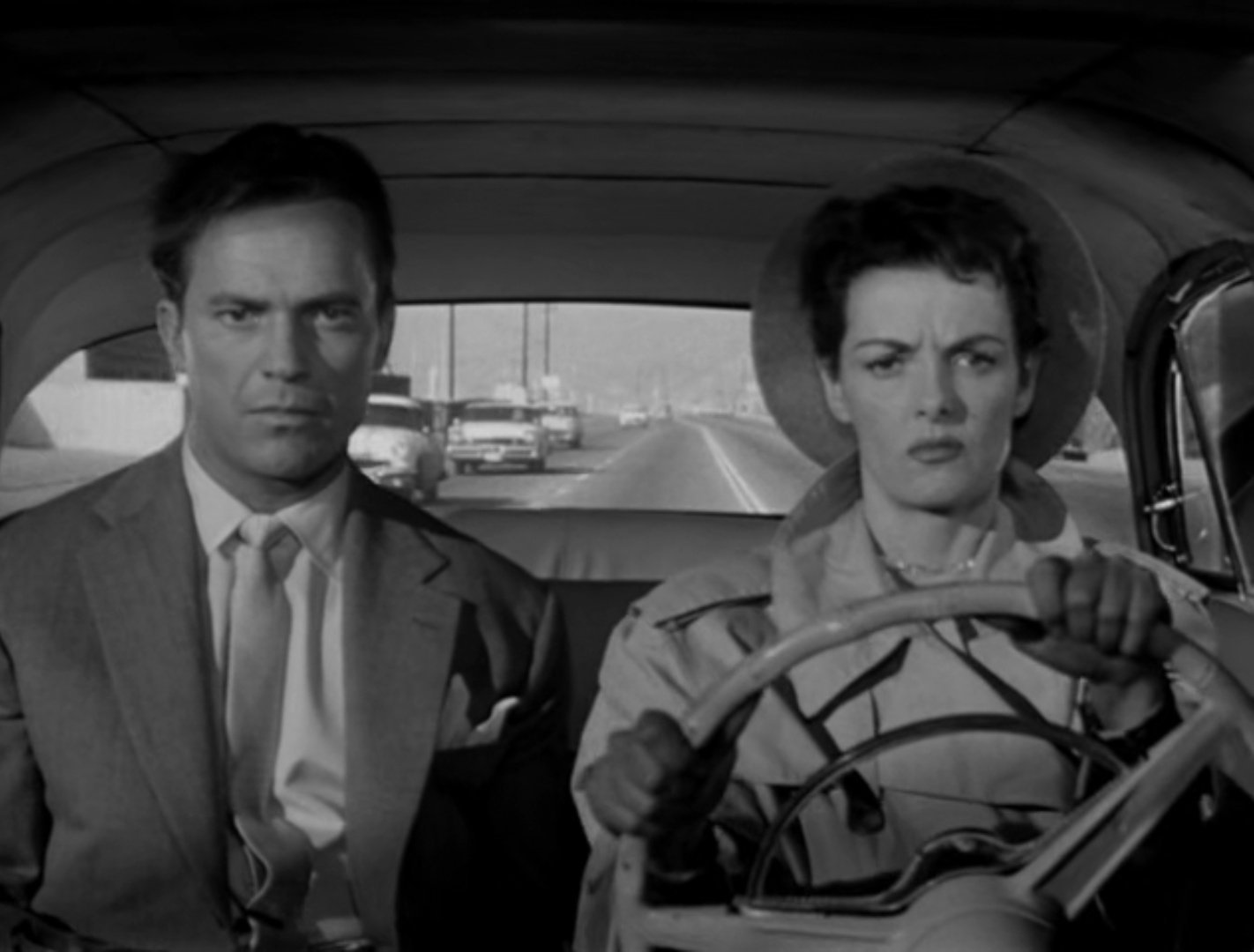
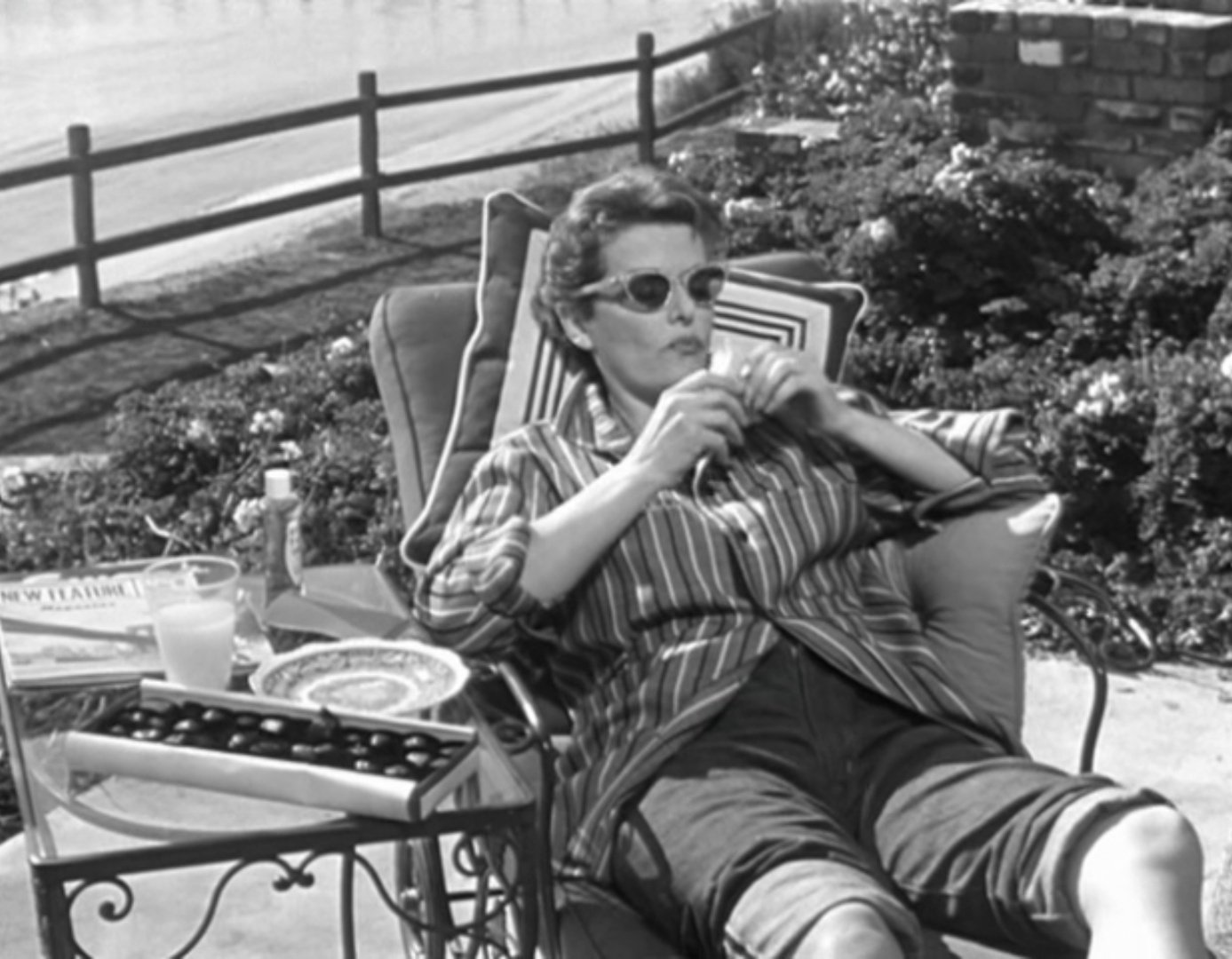
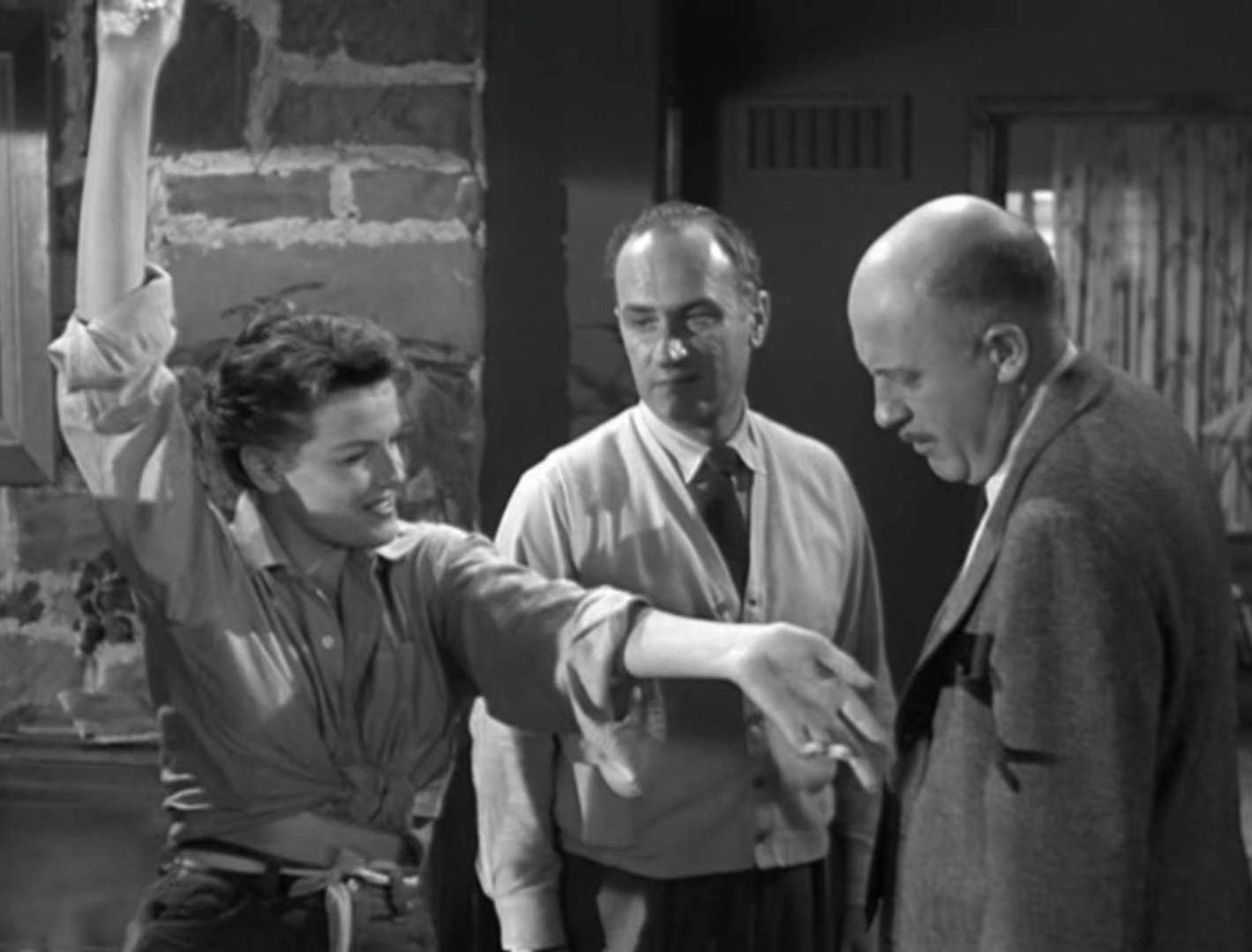
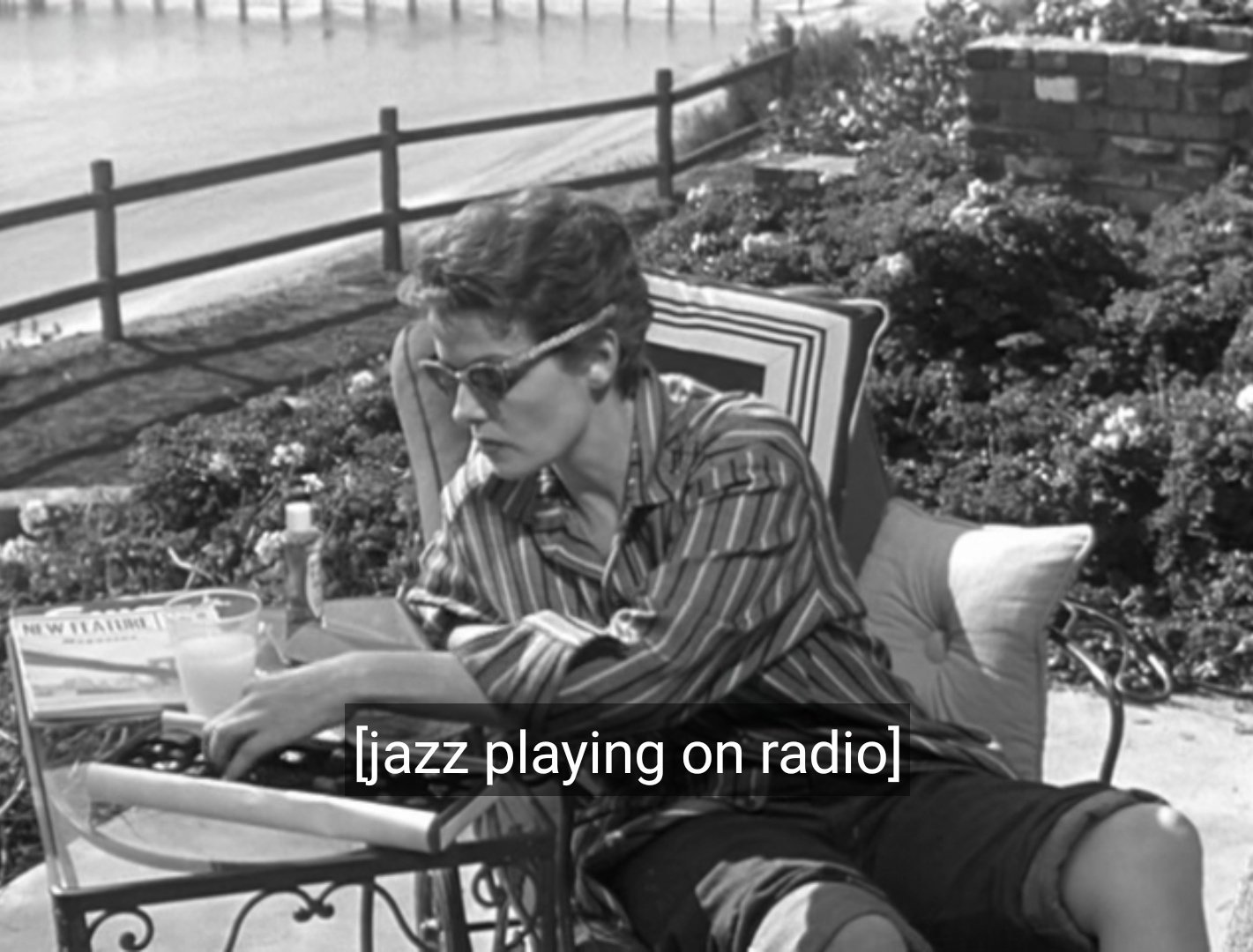

Ralph Meeker only wears soft, comfy sweaters (SWEATER WEATHER) while ragefully smoking a pipe, and there is a quiet power to that as well.
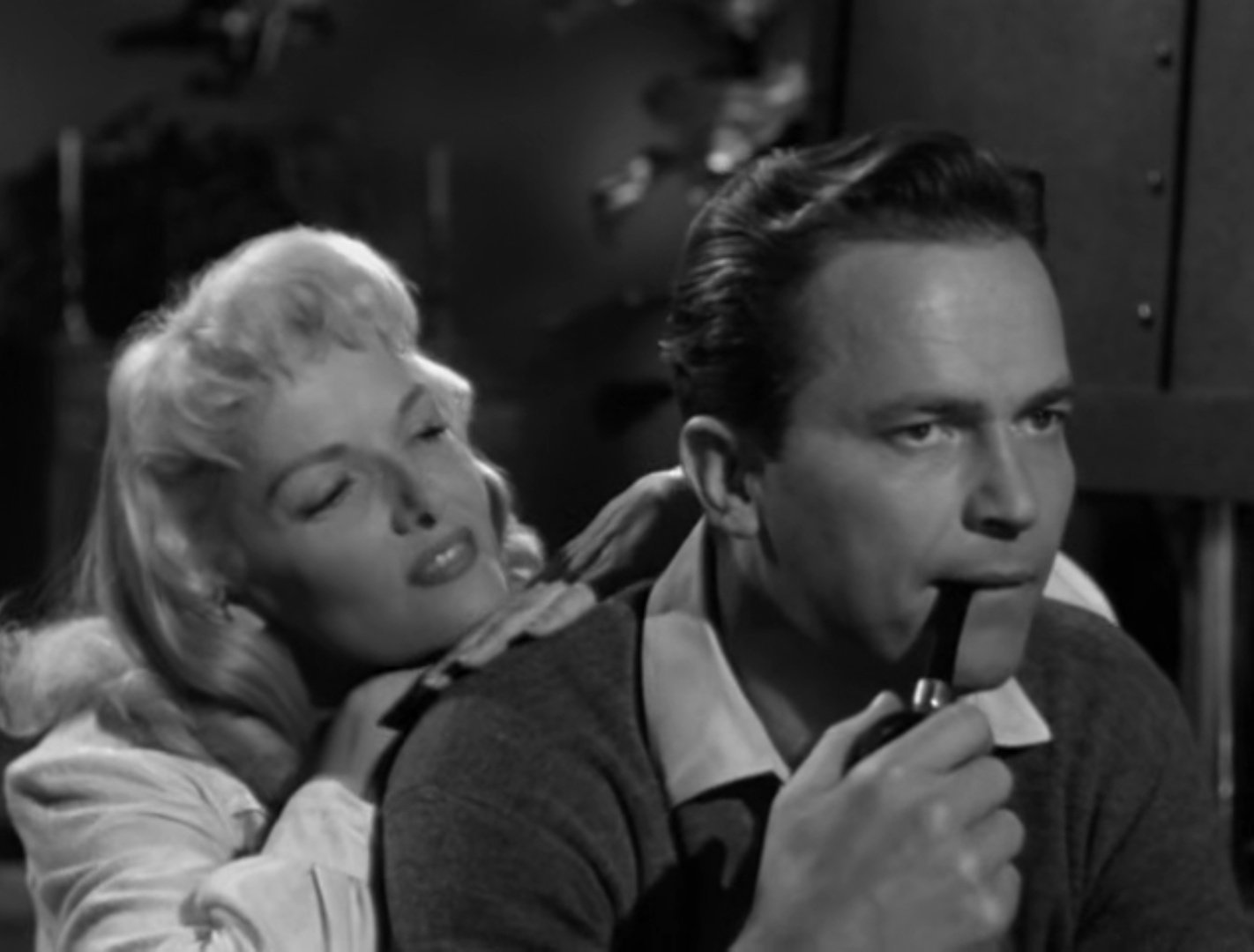
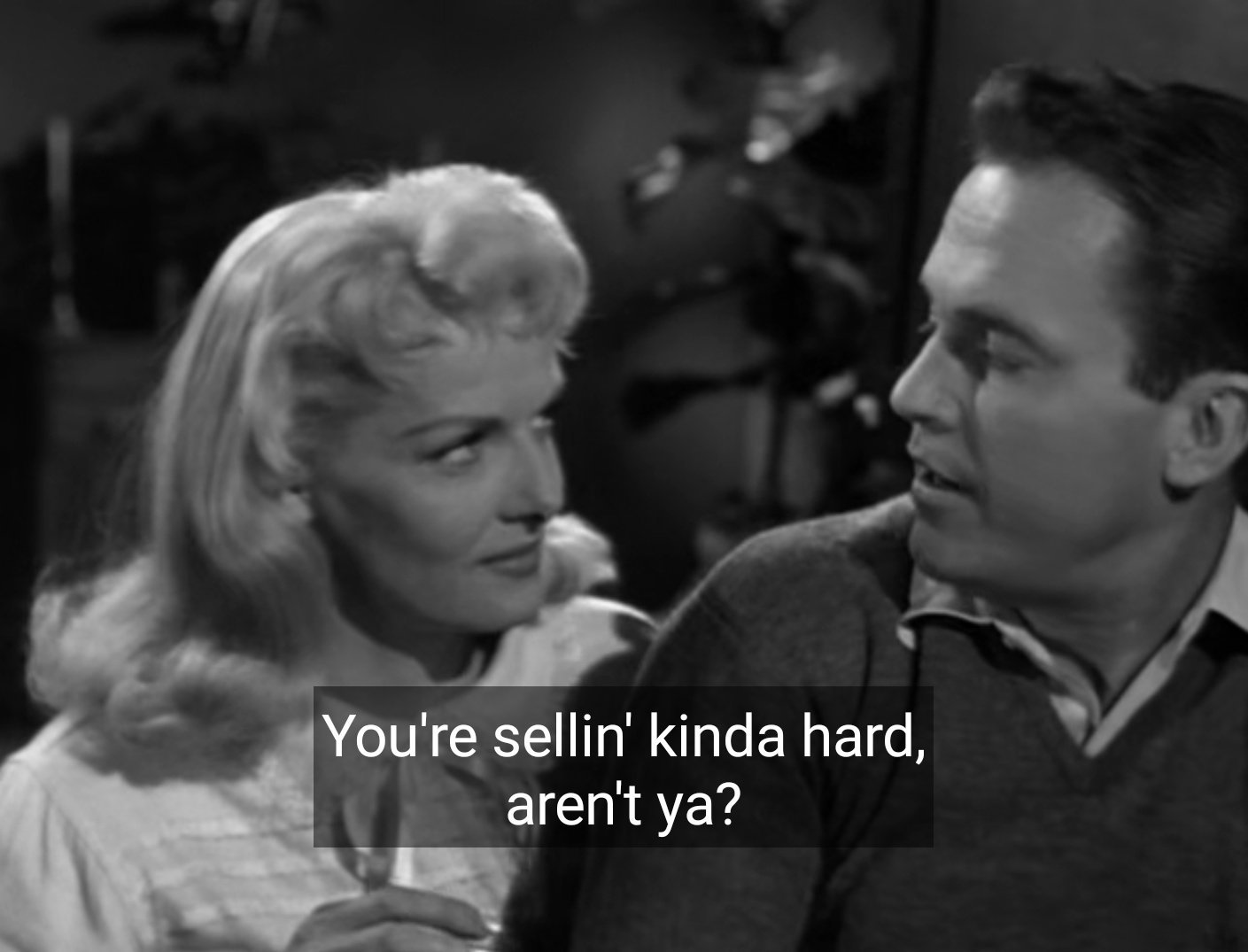
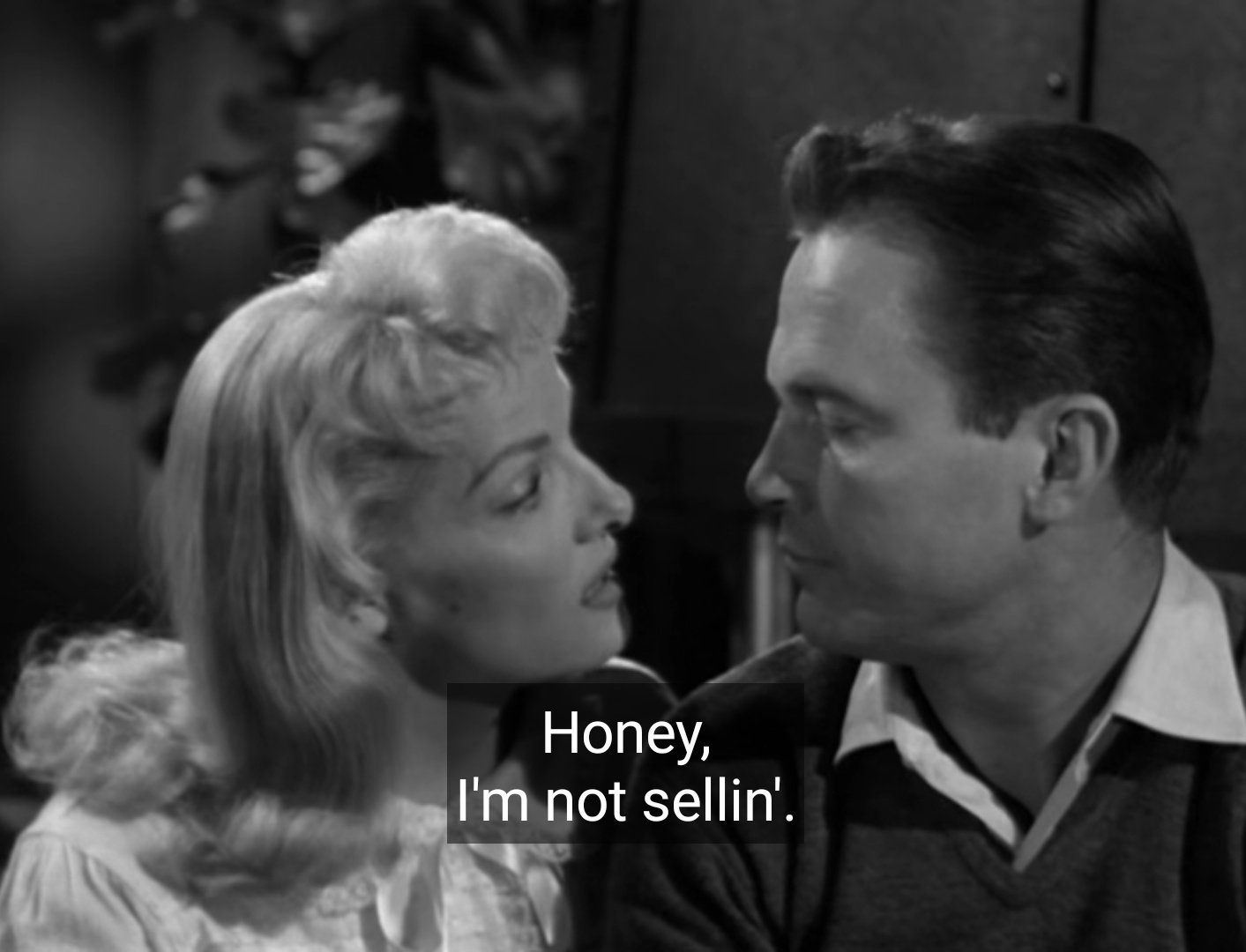
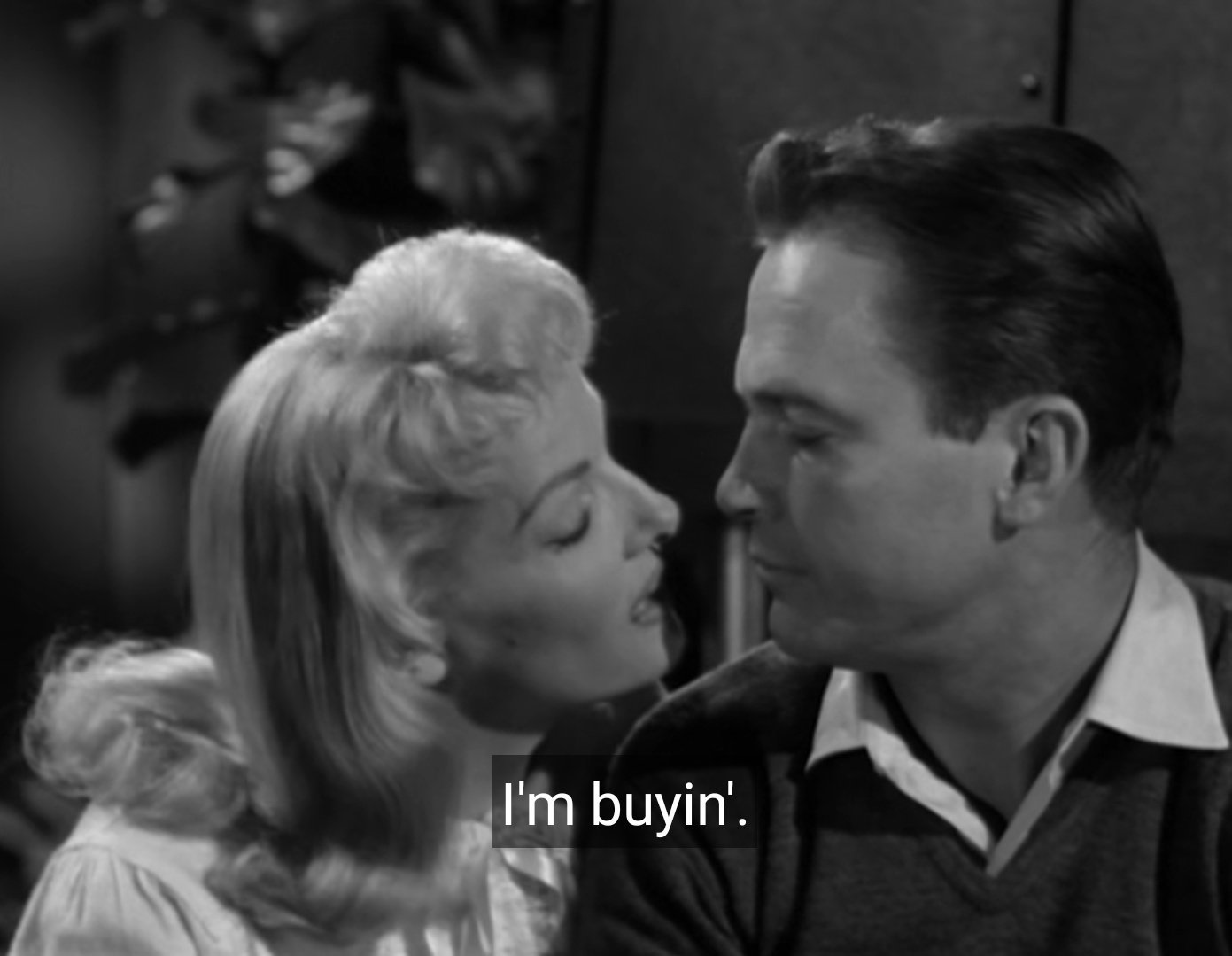
It makes absolutely no sense that this film is in black and white instead of glorious technicolor (literally do not name your film after a color and then not have color), but also it oddly makes the most sense because, again, this movie is not a light studio comedy. It’s a film about Hollywood and all its darkness.
It is also a film in which Jane Russell gets drunk on eggnog and also in which she stone-cold sober knocks out a cop and steals his car!
I am literally lightly cackling to myself--out loud--alone in my apartment right now remembering how much this film delights me. I think those of us who love cinema have a myriad of reasons why we do. I know I certainly love cinema for the transcendent moments of beauty, for its ability to immerse us into another life, for the social connections, for the community it creates, for the visually stunning images. I also love cinema for sometimes being absolutely ridiculous. Film is a collaborative medium in its very nature, and sometimes, you take a step back in your mind, and survey a work like this and realize how many people contributed to the glorious absurdity of it.
What is The Fuzzy Pink Nightgown if not a product of dozens and dozens of skilled creators who all thought to themselves, “yeah, this will work”?
It does work. It is a great time. It is also a little bit about Stockholm Syndrome. But, mostly, it is about Jane Russell being tall and wearing hats and having absolute control over her image for one glorious film.
originally published on The Classic Film Collective on 11/07/2021.
-Meg
Bikini Beach (1964) or: How I Learned to Stop Worrying and Embrace Joyful Nihilism
Bikini Beach // dir. William Asher // United States
Bikini Beach // dir. William Asher // United States
We have had more than one successive day of sunshine here in Seattle, so yes, I am calling it: SUMMER IS HERE! As with many things in life (I resisted adding a heavily sighing “these days”), summer is more of a vibe than an actual tangible construct. So, to celebrate that, I want to celebrate a film that truly understands why vibes are more important than tangible constructs.
Bikini Beach (1964), dir. William Asher, is basically the third in a nebulously numbered series of Beach Party films (whatever the true number of films in the collection is--I’ve seen them all), and it is also the best film of the entire series.
(Quick vibe-check: if you think the best Beach Party film is Beach Blanket Bingo, respectfully, please either keep that to yourself, or quietly exit today’s lecture--thank you!)
Its status as best is perhaps based entirely on the initial determination of my 14-year-old self, but I truly do trust that 14-year-old me remains the best judge of 1960s teen surfer comedies, so we are running with it.
14-year-old me is also where our story begins today, as that was my age upon first viewing this cinema treasure. It was 2008, and back then, Hulu used to have an entire library of ~underappreciated~ 1960s movies to watch for free without subscribing (reach out to discuss Dr. Goldfoot and the Bikini Machine at length anytime). I saw this, and quickly showed my childhood best friend and it entered the sleepover rotation, and the rest is history, and I am definitely going to text her “Oooh Bixby’s Bird Farm!” as soon as I am done typing this up--and she will immediately get it.
There is something to the fact that all these films were made by American International Pictures (all hail cinema) very quickly and very cheaply and intended to be direct-to-the-teens movies, and somehow that strategy was still holding up and working out forty-five years later.
The formula works, because it is basically all bright colors, sight gags, and occasional footage of stunt surfers wearing visibly fake Annette wigs. More to the point, the formula works, because Annette Funicello + Frankie Avalon really are fun and charming onscreen. Their performances are truly enjoyable, and they have sweet, friendly chemistry together (I am not the first to say this, obviously, but consider it very Doris Day + Rock Hudson in the best ways).
In this film (and others in the series), Annette Funicello has the often thankless role of trying to get Frankie to think about his future, but she does so with a mischievous twinkle and a strong presence. She also really knows how to sing softly+sweetly while walking on a rear-projection beach at night-time, and I am not being ironic by saying that. It is an actual skill to inject so much personality and professionalism into formulaic, low-budget films. Plus, I have never stopped thinking about these pants.
And, Frankie Avalon in Bikini Beach? Well, let’s just look at the first note I scratched out while considering what I wanted to write here: “Tour de force Frankie Avalon the only good teen boy 60s actor.”
Those who know me well, will know that while I do enjoy frequently saying the phrase tour de force out loud, I do tend to truly reserve it as a description for work like Paul Robeson in Body & Soul, or Irene Dunne in The Awful Truth, or Tom Hardy in Venom. So, when I say Frankie Avalon’s dual role (!!!) as Frankie and as The Potato Bug is tour de force, I truly mean tour DE force. On that note, what I am about to tell you is going to make you reconsider trusting 14-year-old me as a cinematic arbitrator, but actually it should just reinforce the objectively career-pinnacle work Frankie Avalon does here.
So, Frankie plays two parts here. He plays “Frankie,” the lead youth who lives each day as it comes and regularly breaks the fourth wall to chat to the audience, and he also plays The Potato Bug, a British pop singer ala The Beatles as interpreted by Terry-Thomas (the accent and the gap tooth really give away that inspiration). At one point, “Frankie” dresses up like The Potato Bug to fool Annette, and shenanigans ensue. Anyway, yes, 14-year-old me--an already sophisticated film fan with a wide-range of film interests and deep well of films watched--did, in fact, think that there was a different actor playing The Potato Bug and that when “Frankie” pretends to be The Potato Bug in-film that it was just Frankie Avalon doing a convincing but not perfect impression of the actor playing The Potato Bug. AND YES, when the end credits scroll said,
Frankie Avalon as Frankie
Frankie Avalon as Potato Bug
I GASPED.
I still cannot explain this absolute lapse to you except that it was a tour de force performance.
Also, this bit of trivia was included in my Beach Party boxset: "Frankie Avalon's make-up and heavy accent were so convincing, visitors to the set were not aware that he was playing the role of Potato Bug." Think kindly of 14-year-old me. I was not alone in this.
Now that proper deference has been given to this iconic ringer performance, consider the other members of the cast. These movies have a structure that, along with the regular youth crew, includes an antagonist (usually older familiar actor), a sparring partner for the antagonist (usually older familiar actress), a guy running a hangout (usually a Don Rickles or Morey Amsterdam), and a surprise cameo guest from a true legend.
The reason Bikini Beach is the best of the series is that each necessary ingredient is there, but also actually good. In the original Beach Party, Robert Cummings plays the older familiar face role as a professor “studying” youth culture, and comes off as such a creep that even Dorothy Malone sparring with him cannot save the cringe. Here, however, we have Keenan Wynn--an actor who can slot in anywhere in any film and elevate the whole thing. He plays an unscrupulous land developer who is trying to turn public opinion against the surfers, so he can buy up land for his assisted living empire. He does this by bringing along his pet ape Clyde everywhere to prove that the youth are no better than apes. He offers gravitas and wit to a role that requires him to be chauffeured around by a person in an ape suit on rear-projection.
Here his sparring partner is Martha Hyer, a local school teacher who is hip and wants to advocate on behalf of the youth. She is great, and gracefully dances the Watusi with the aforementioned person in the ape suit. Don Rickles owns the local drag strip and the hangout and paints on canvases all over the bar. A strange older man, who is only visible from the back, keeps looking at the paintings but never buying. When his identity is revealed in the finale--it is a delightful surprise. I won’t spoil, but other films include cameos from Peter Lorre, Vincent Price, and Buster Keaton.
There is also the regular crew including Donna Loren (and her headbands!), Jody McCrea (exact replica of father Joel), Candy Johnson (fringeeeee), Stevie Wonder (still Little Stevie Wonder here), and--in typical inexplicable, but oddly obvious fashion--Timothy Carey playing a pool-playing, growling South Dakota Slim. Never let it be said that there was no edge to Annette + Frankie’s beach.
In fact, there is a bit of unsettled anarchy to these films. Certainly, there is a peculiar kind of lawlessness present. They never once address any big contemporary social issues, and they are almost uniformly white (and sometimes have casually racist elements like Buster Keaton playing a “native witch doctor” in How to Stuff a Wild Bikini), and they cannot be considered any sort of radical or counterculture art. However, they do offer pure, ungraded joyful nihilism.
There is a utopian element to Bikini Beach, with the unsupervised young adults living communally on the beach: sharing resources and experiences. They take each day as it comes, learn new things, and spend a lot of time dancing in the sand. The youth are mostly kind, or at least benign, and tend to solve individual problems by coming together. There are always hints that they know the world does not work that way, and so they just choose to ignore the world. In the ecosystem of the Beach Party, that works out for them just fine. They live outside of general society, and have created a new one.
In this society, plot, logic, and physics mean nothing. It is all vibes. 100 minutes of colorful vibes. There is no sight-gag too disruptive, and no innuendo too obvious, and no pratfall too chaotic to be included. There are chase scenes, a breaking up the bar fight, a little surfing, some drag-racing, and multiple musical numbers. Physics means nothing, but commitment to the film is everything. And, everyone involved was professionally committed to the silliness. Many years later, William Asher (director, co-writer, and essentially architect of the series) said about the “sheer nonsense” of the films, “The whole thing was a dream, of course. But it was a nice dream.”
originally published on The Classic Film Collective on 05/05/2021.
-Meg
Piranha (1978): “Terror, horror, death. Film at eleven.”
Piranha // dir. Joe Dante // United States
Piranha // dir. Joe Dante // United States
okay, I loved this movie. I am actually shocked how much I loved it. It was actually really…great?
Earlier, for reasons, I was rereading the obituary post I wrote for Bradford Dillman in 2018. I quite like this bit of writing actually. I feel like it articulates with sincerity and earnestness my appreciation in a way that feels personal to me. After reading it, I had to watch something with The Dill Man. Piranha had been circling around in my brain for a while, and it seemed like I was finally ready. I have spent the last few years watching (admittedly mild) horror films with Malakie and Paul, and I feel like I have become inoculated to the blood and guts and gore more than I ever was previously.
Piranha’s time had come.
(some mild spoilers may appear in this post, but nothing too wild)
This is actually my first Joe Dante movie. For some reason, in my mind, I had considered myself a fan of his work, and now I am realizing that probably just stems back to TCMFF 2014, and sitting in the audience while he introduced a 35mm screening of the original 1956 Invasion of the Body Snatchers (Martin Scorsese’s personal print). He talked and shared stories and it was fun time. I cannot remember a single story or anecdote he shared, but I do remember him talking about working with Kevin McCarthy—a very cool actor I have loved since I was kid.
In this film, Kevin McCarthy has possibly greatest screen entrance I have ever seen. This is literally his first shot in the film:
Literally always going for it. That’s one of the big reasons this film works so well, because it is filled with a collection of pros who know what needs to be done. I will talk a bit more about my beloved Bradford Dillman in a bit, but also here we have Heather Menzies—an actor I primarily associate in my brain not with The Sound of Music, but with this one incredibly off-putting character in an episode of Alias Smith and Jones. She is a lot of fun here as a “skiptracer” out to find two missing youths who have disappeared (got piranha’d in the opening scene). She is resourceful, and indomitable, and quite brave. She’s also the person Kevin is screaming at in his entrance, as she unfortunately is responsible for the piranhas getting loose in the waterways. ooops.
Also of note, Barbara Steele is glorious as an absolutely terrifying military-adjacent scientist. When she stares right at the camera and says the film’s final line, “There’s nothing left to fear,” I felt that chill running up my spine.
I also loved seeing a favorite Keenan Wynn popping up for a sadly short-lived role. What an evergreen performer he is in every film. I especially enjoyed the very sweet dynamic between him and Bradford Dillman. In those two, you have two actors used to creating something out of nothing—and, in this film, they are enjoying having a little something together. (also, I really like Keenan’s shirt in this scene. I would like to own it.)
This, I suppose, brings us to Bradford Dillman. oh, how I love his work. And, oh, how perfectly he fits into this film’s somewhat straight-faced anarchy. This could have easily been very stolid in the hands of another 1970s B-actor. But, not in the hands of the owner of the best evil and/or bent smile in the business. What a charismatic joker.
He never offers half-measures, and every performance is interesting and fully-realized. He may have sometimes been given characters who were not interesting or fully-realized on script, but they never made it to the audience that way.
He could work his craft, but instead he often seems to want to twist his craft. A serious, trained ac-tor, he knows how to create achingly real human characters, but sometimes he seems to say, I can give you human reality, but why take that when I can give you realityish, you know, human+ ?
He reads this film so well. He brings both empathy and a transcendent twinkle to play inside the lines of Joe Dante’s often quite satirical work. There is the pre-piranhas quiet desperation, the frantic concern to make things right and protect his daughter, and the genuine grief and tears over the death of a friend. There is also the perfect understanding about just how ridiculous this all this. He and Heather Menzies have very good chemistry and fun rapport from the very beginning.
“Whitney: The piranhas...
Buck Gardner: What about the goddamn piranhas?
Whitney: They’re eating the guests, sir.”
The most unexpected delight in this movie for me was its absolutely unsubtle political messaging. I hits well for me, because I love a social-minded horror. One of the main targets of this film is the US military and the war+death complex. Turns out the ravenous, mutant killer fish were created by the US military to use against the Vietnamese. When the US were defeated and the war ended, the program was scrapped. The fish survived, because scientist Kevin McCarthy couldn’t bear to stop the good times and see his creations destroyed, and as Barbara Steele notes quite cheerfully, “There’s always going to be another war.”
Also targeted are the police (the domestic arm of the war+death complex), corrupt politics, corrupt business, consumerism, inhumane news practices, and adults who bully children. Each of these are responsible for the death and destruction. Each safeguard crumbles immediately in service of big money and big war…or just in service of belittling and bullying children. Some end righteously piranha’d, and others end the film with no consequences and no limits made on their power.
It is only individuals banding together in community to protect each other who do any good.
Also, speaking of individuals trying to do good, I have so many questions about the little walking piranha lizard that spends the entirety of the early lab scene skulking around unnoticed by anyone, but observing everyone and everything. I was convinced this would be ultimate saviour of the film, yet it is never noted by anyone or mentioned ever—nor is it ever seen again. WHAT DOES IT MEAN. THE PEOPLE WANT TO KNOW.
Me when you say, “Keanu Reeves seems like such a nice guy…”
“…but he’s a terrible actor. lol”
Another creature I would like to know a little bit more about is this little Godzilla fish in a tank who seems to respond to Heather Menzies’ disgust with an expression that can only be read accurately as, “Same to you lady!”
Incredibly, we almost never see any actual piranhas in this film. Instead, most attacks are first from a very funny, but also absolutely unnerving Jaws-like piranha view of the human victim and then just wild splashing, freaky trilling noises, and blood. lots o’ blood.
The true villains and obstacles in this film are less the mutant killer fish—and more the rich and powerful killer structural systems.
The need to escape military guard did necessitate this perfect exchange with some all-time Dillman line-readings, and some excellent reaction work from Menzies.
I think this film may have delighted me so thoroughly because I was just expecting some late ‘70s exploitation Jaws-knock-off with Bradford Dillman playing the Dr. Frankenstein. But, he didn’t create these monsters. He was just chilling! Trying to figure out his life on unemployment (after getting laid off), before it runs out and he needs to find a new job (who among us!). He has a convenient raft, because he built it with his daughter while they read Huck Finn! (raft in river bad idea tho as it turns out) As Emmy said when I insisted on live-messaging her throughout the film: “We love a Dadford Dillman!” Really, I can’t think of a better place to end this post than that borrowed line.
A fun movie, and I quite recommend it if you can handle a bit o’ gore that is mostly easy to glance away from as needed. I have only scraped the lightest bit of the surface of this film. So many other wild, and fun, and WILD things happen throughout!
I have to tell you, I wrote out the most wonderful and complete post. It was divinely inspired. I felt like everything was clicking along perfectly. Two hours later, I go to hit publish—AND THE COMPUTER GLITCHES AND EVERYTHING IS LOST DRAFT AND ALL. So, this is me just writing scraps at 3AM—typing with no small amount of rage. Once I write something out about a movie or talk it out with someone, it’s lost to my brain. I can’t get it back. Only vague notes of it. I couldn’t even begin to just retype it. So I just wrote little bits here and there of new, worse words. RIP Piranha post that read like poetry hope you’re in a better place. 💔




